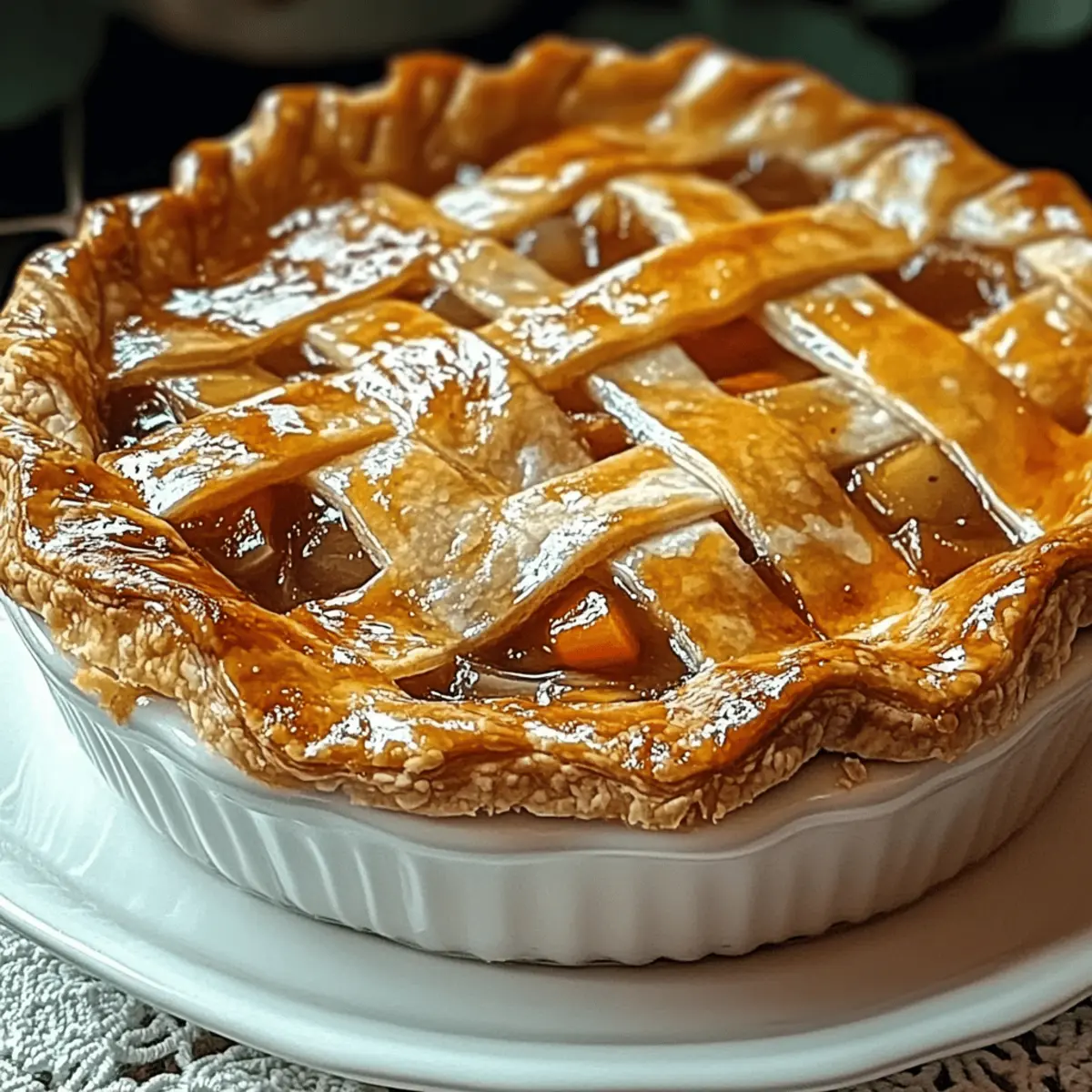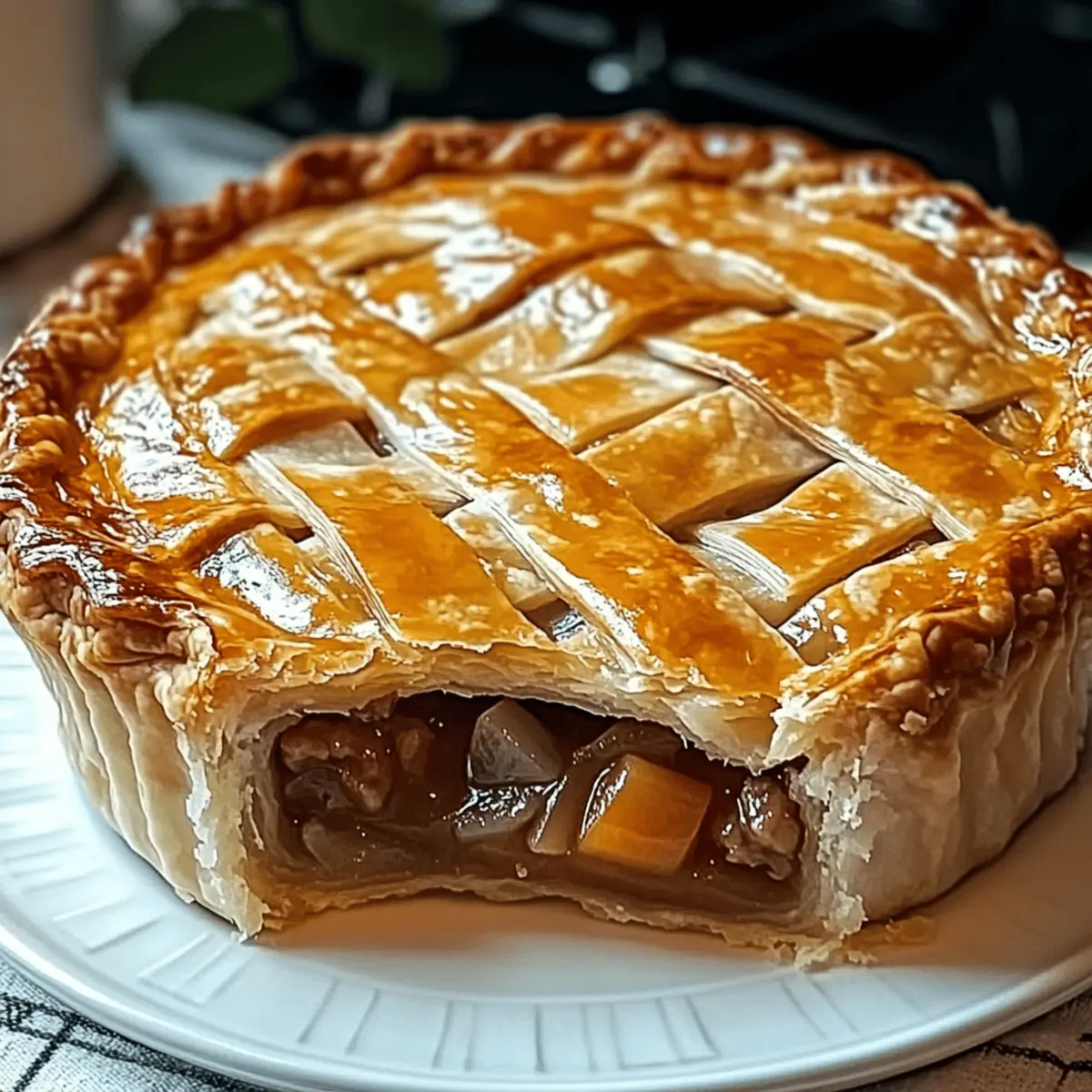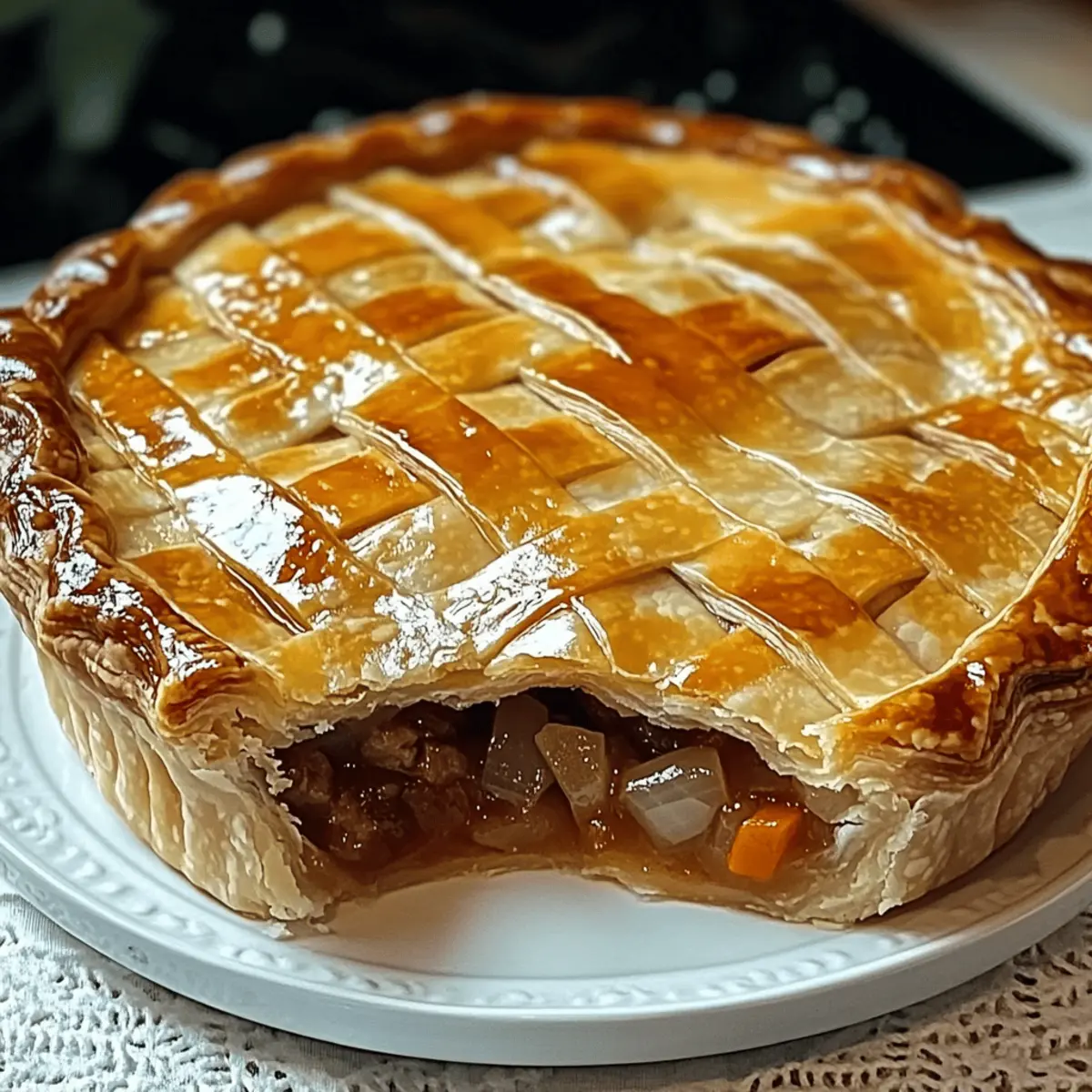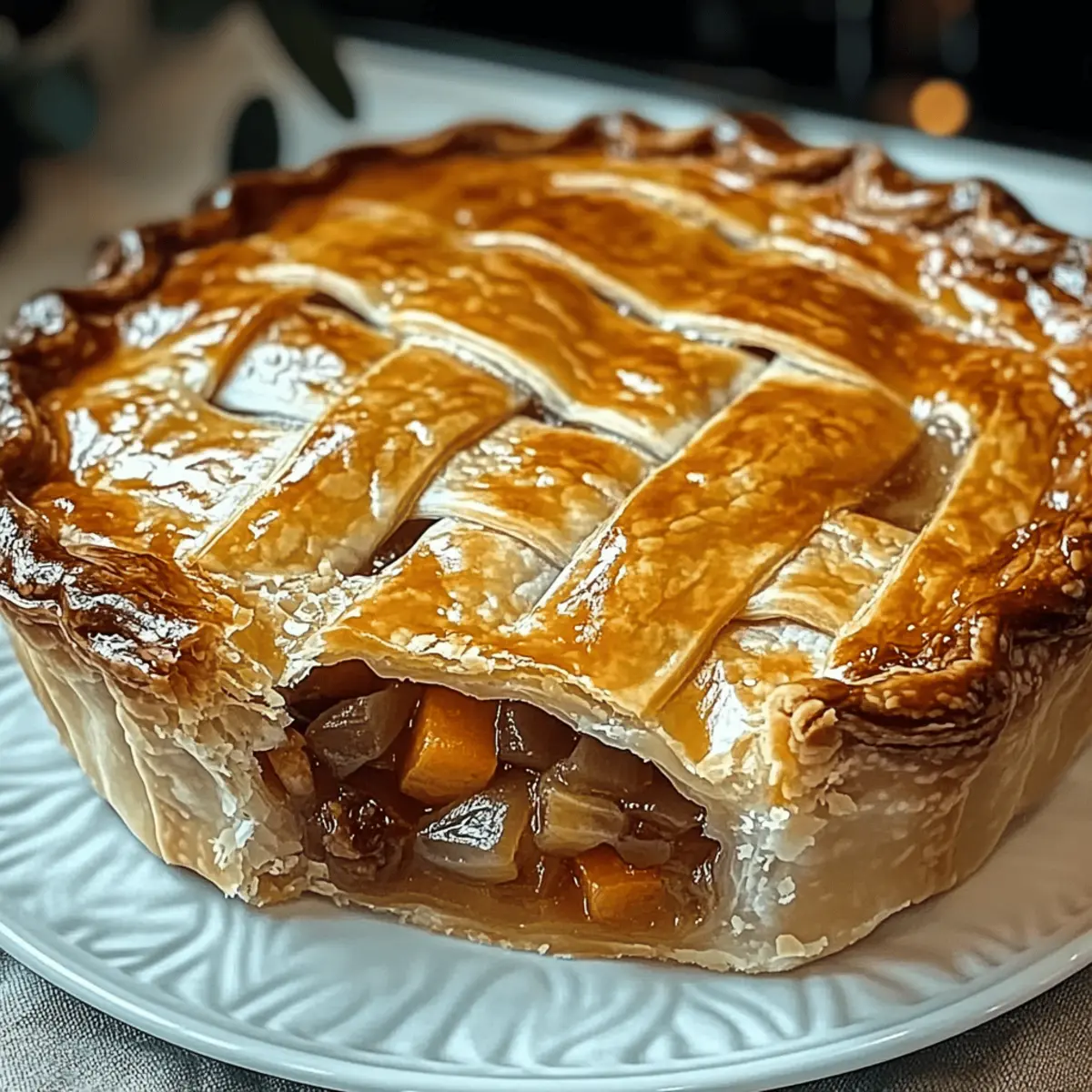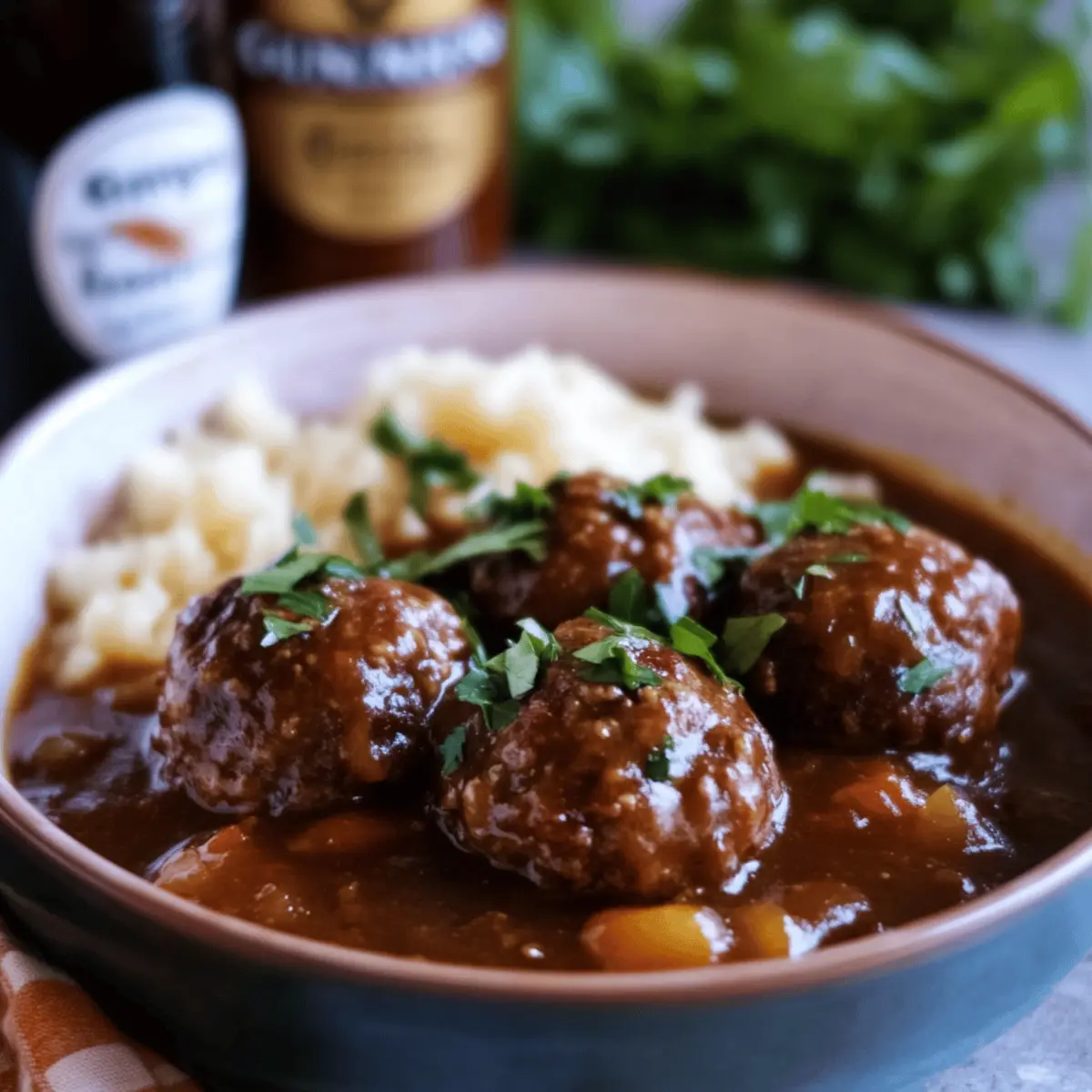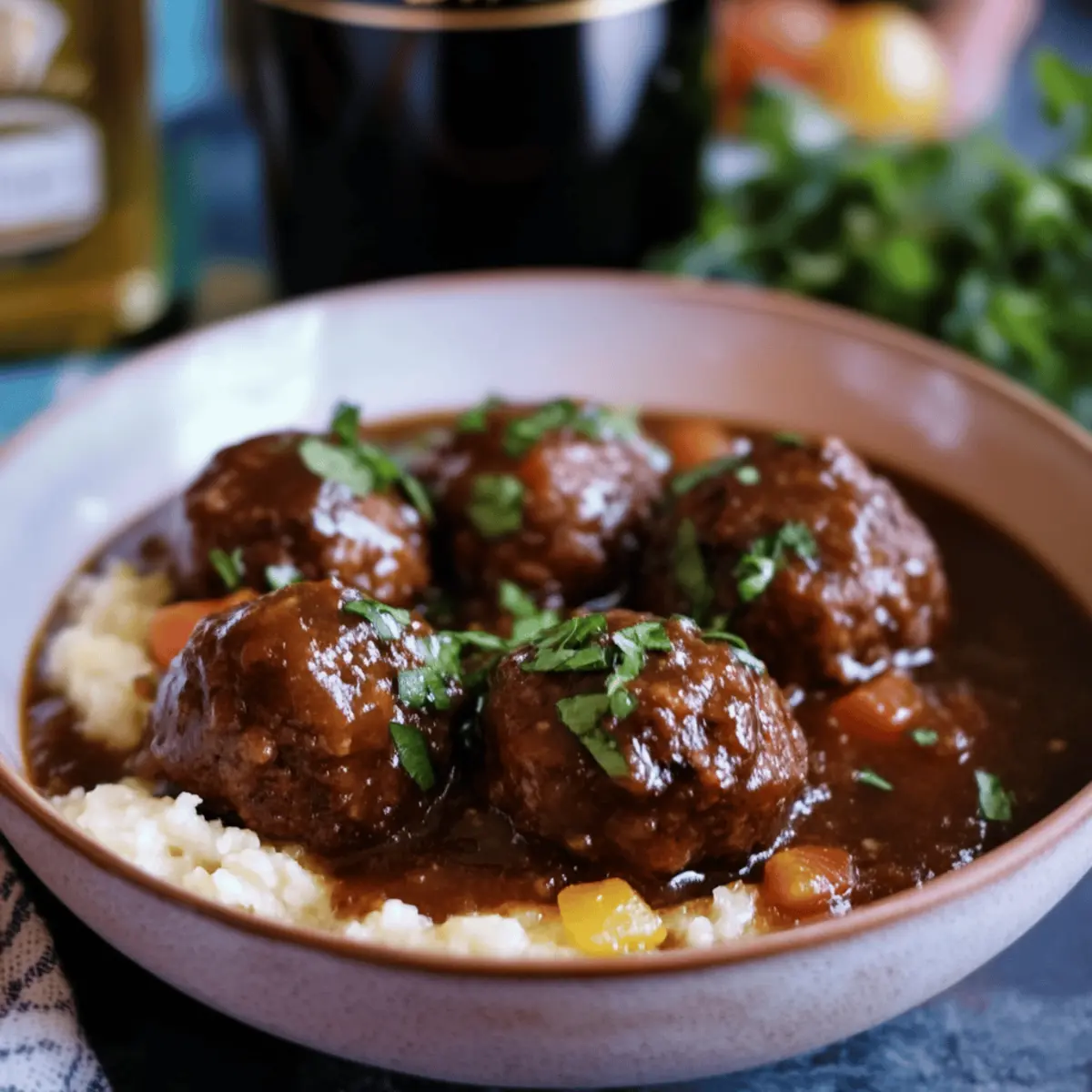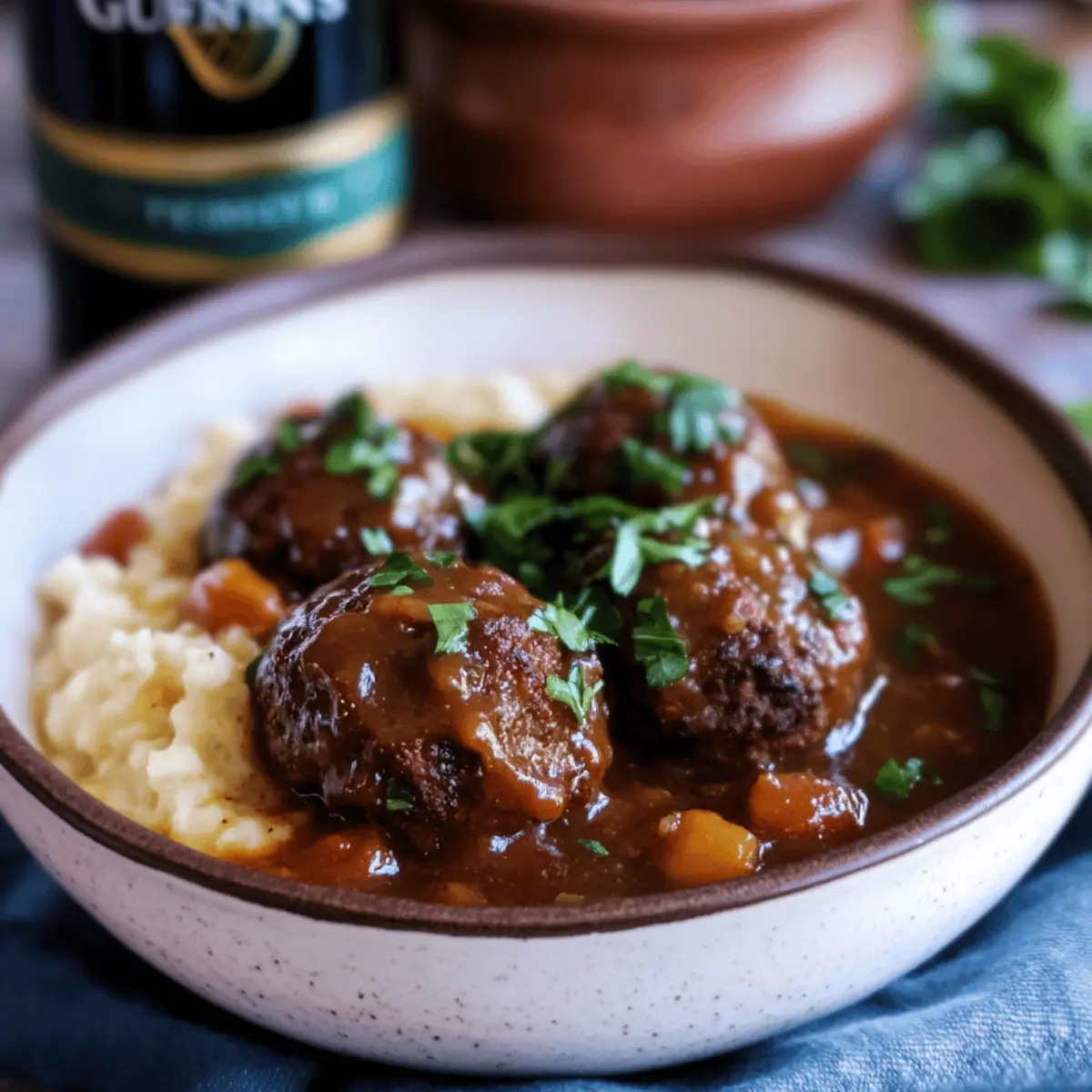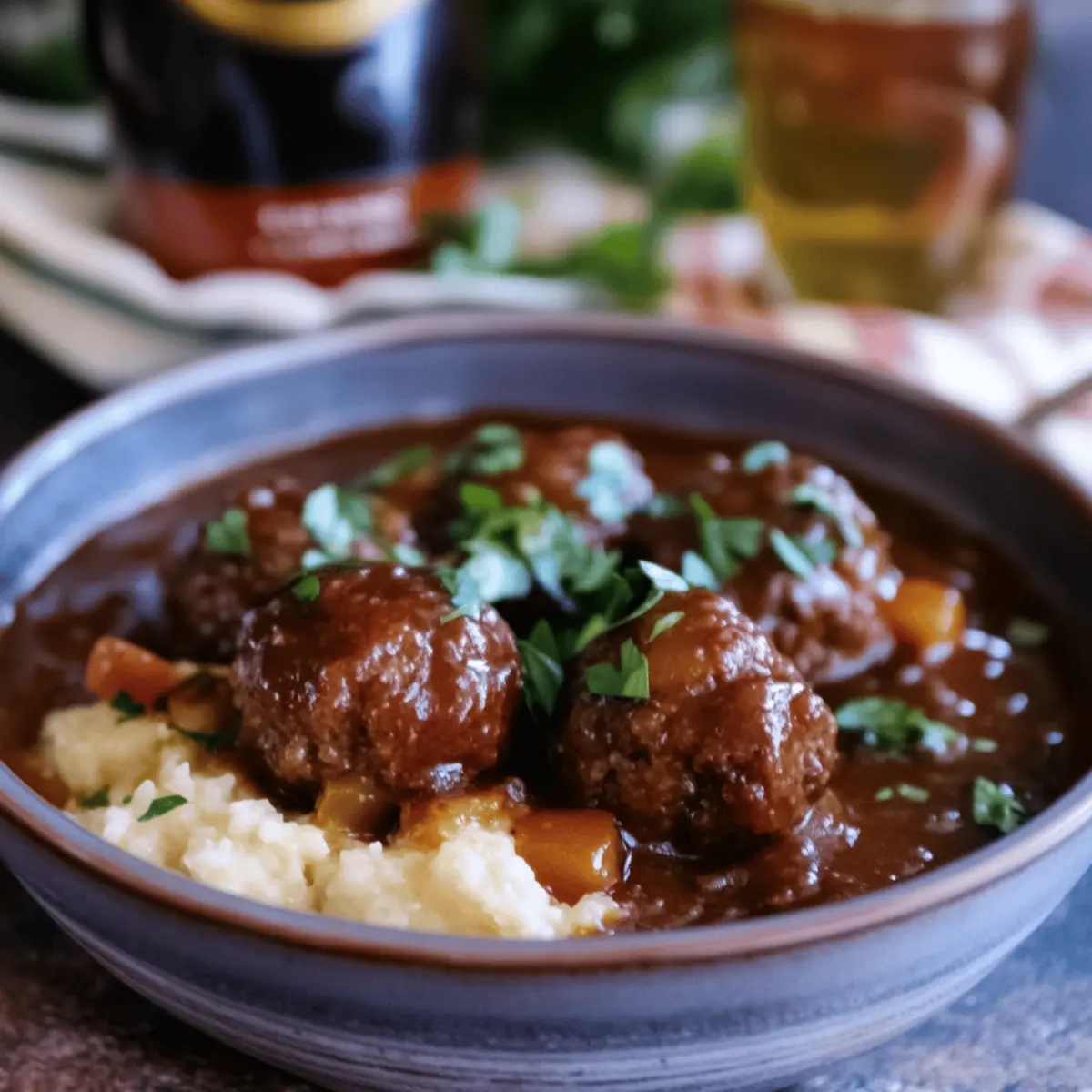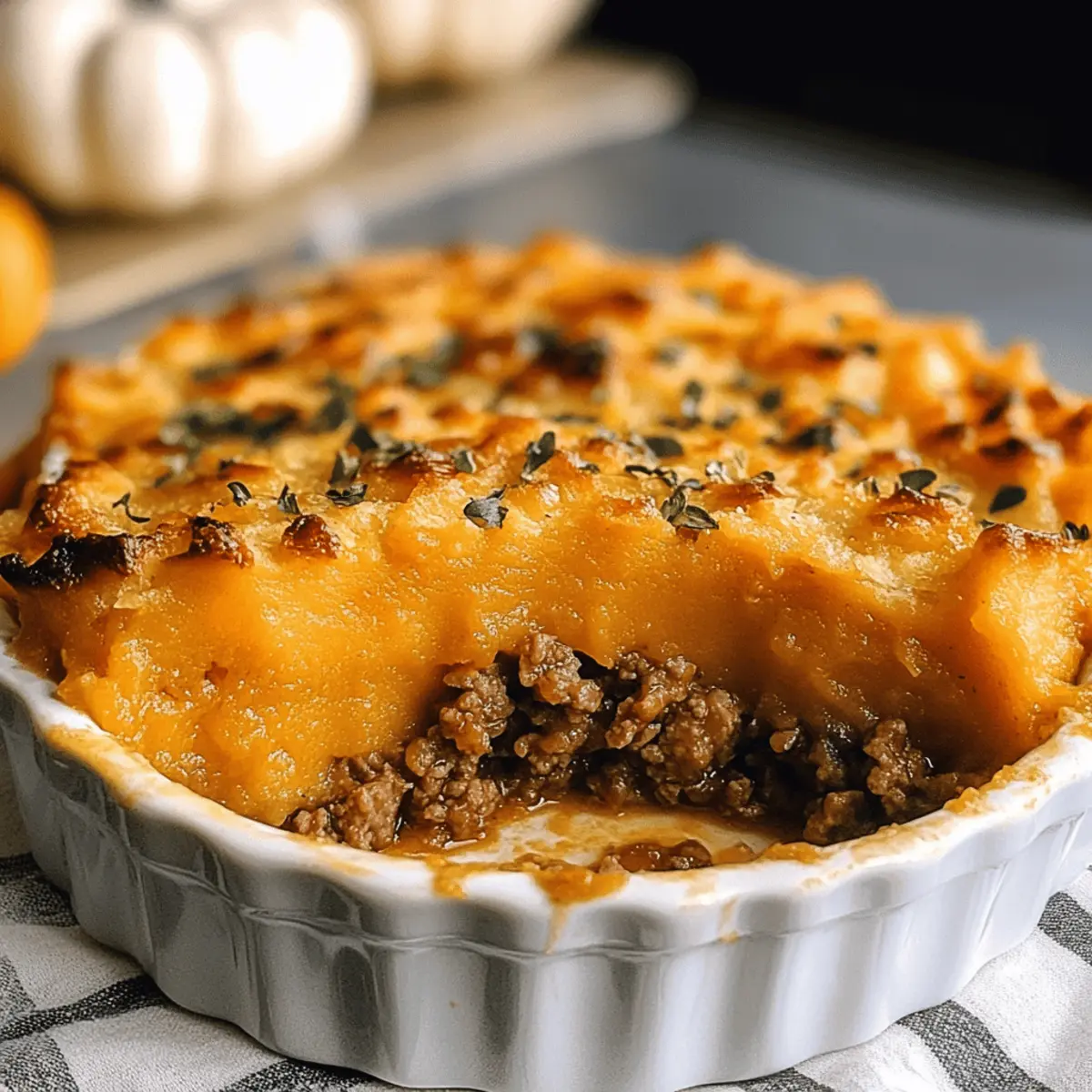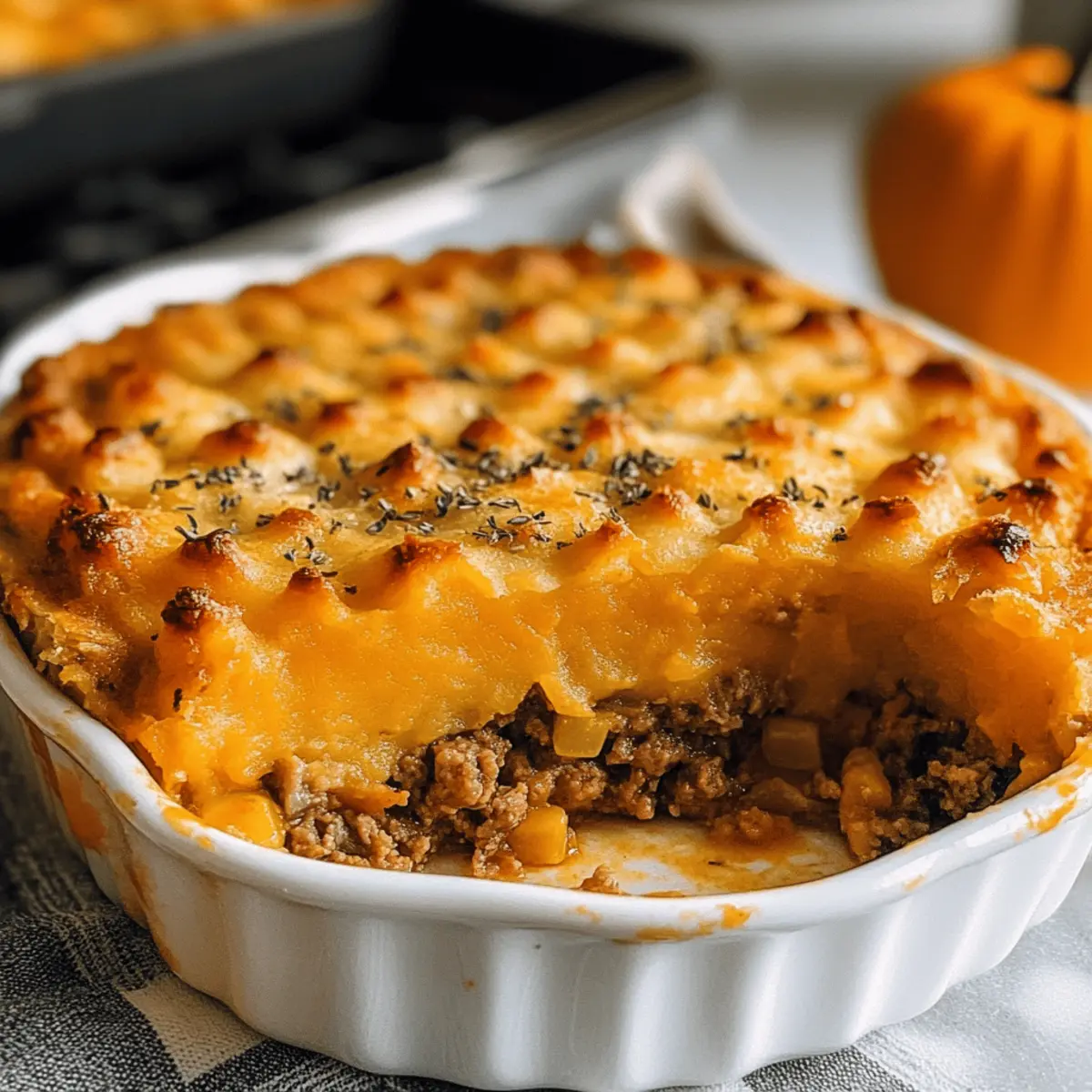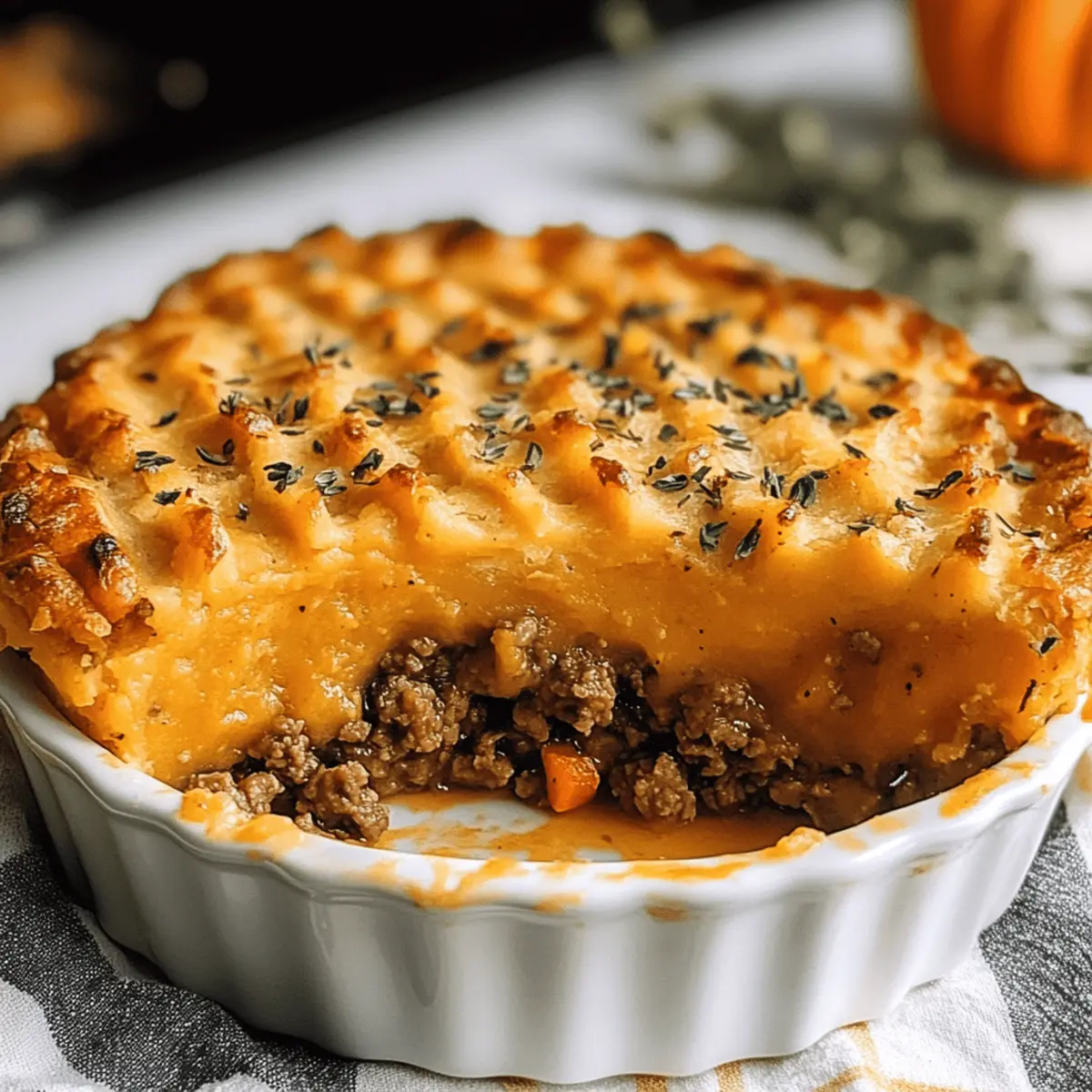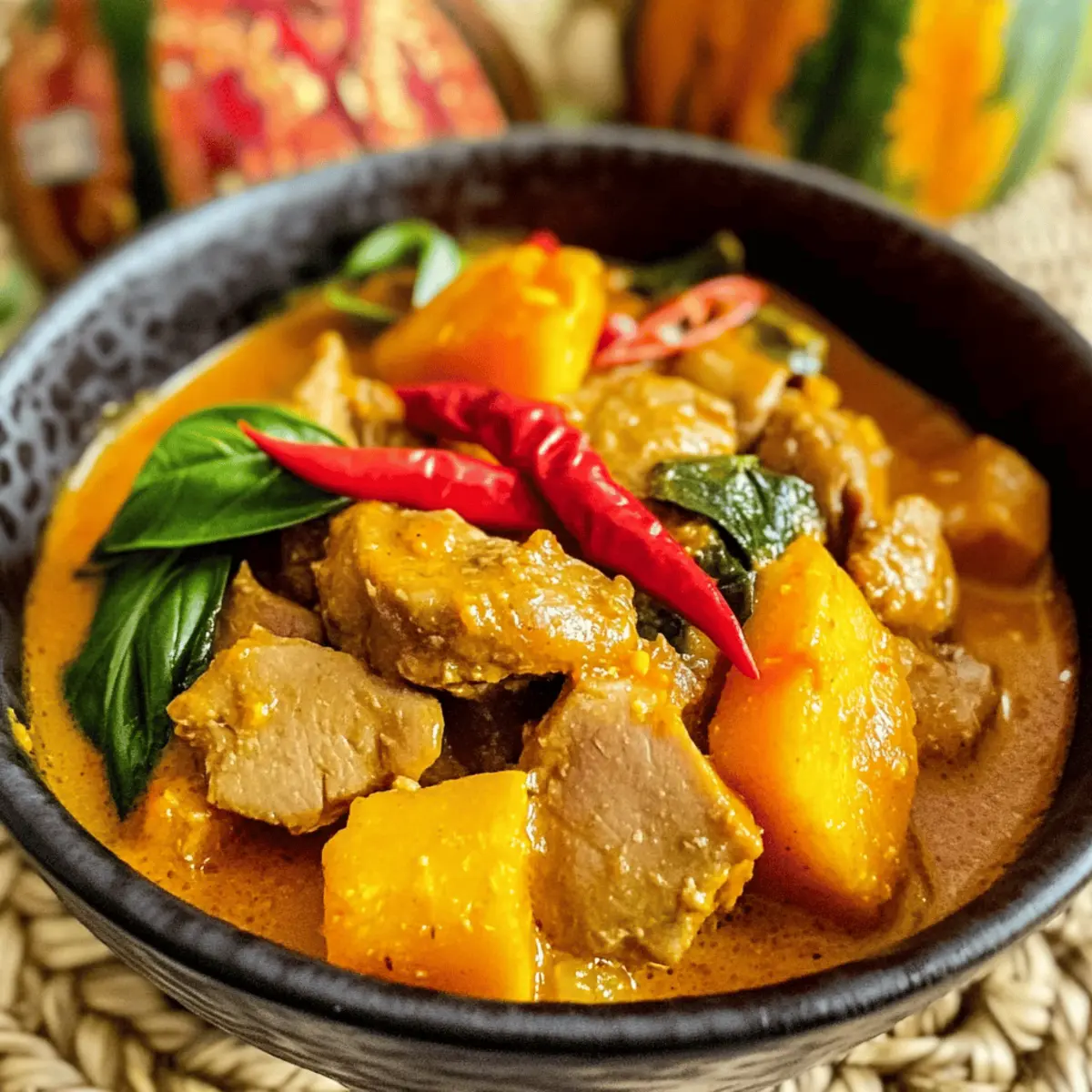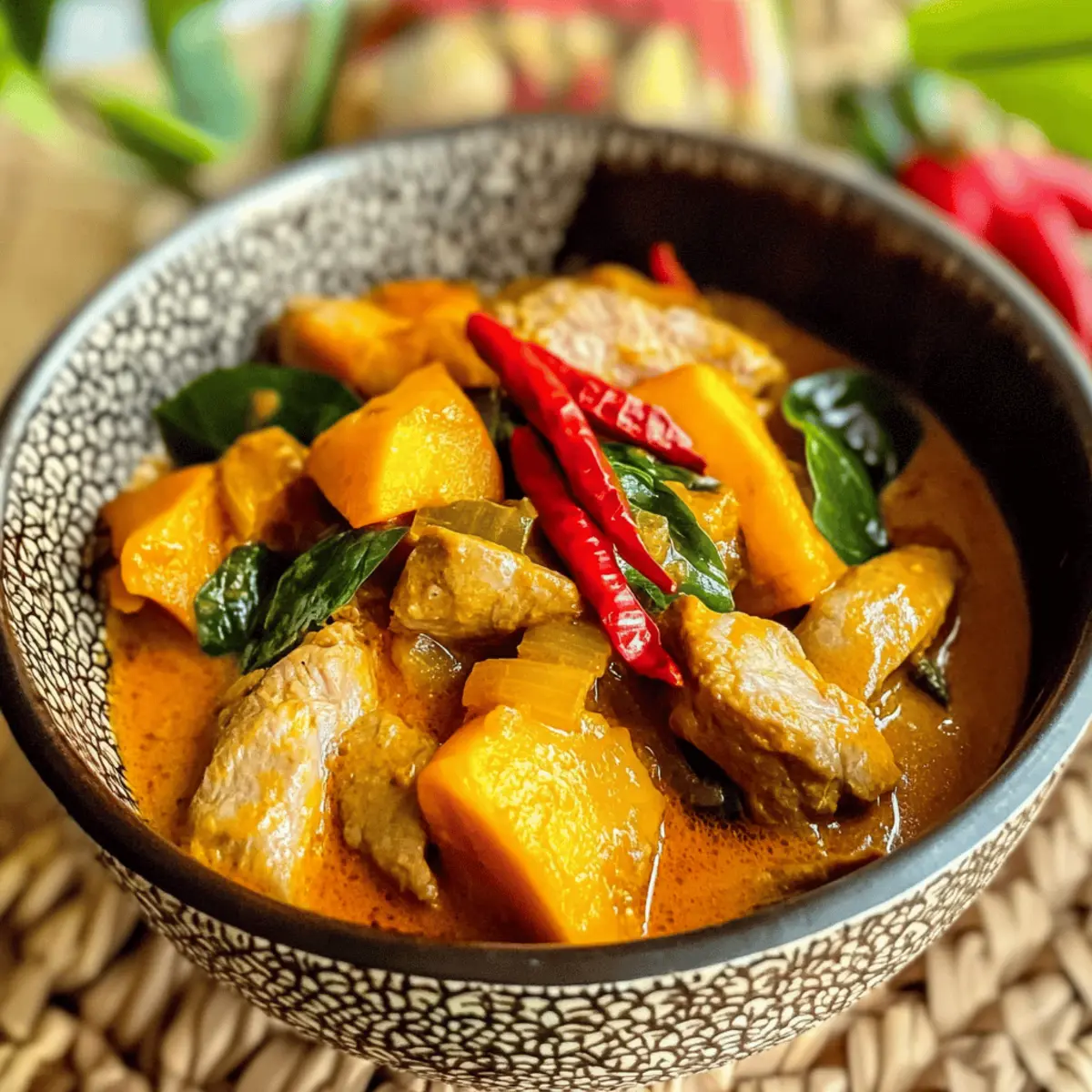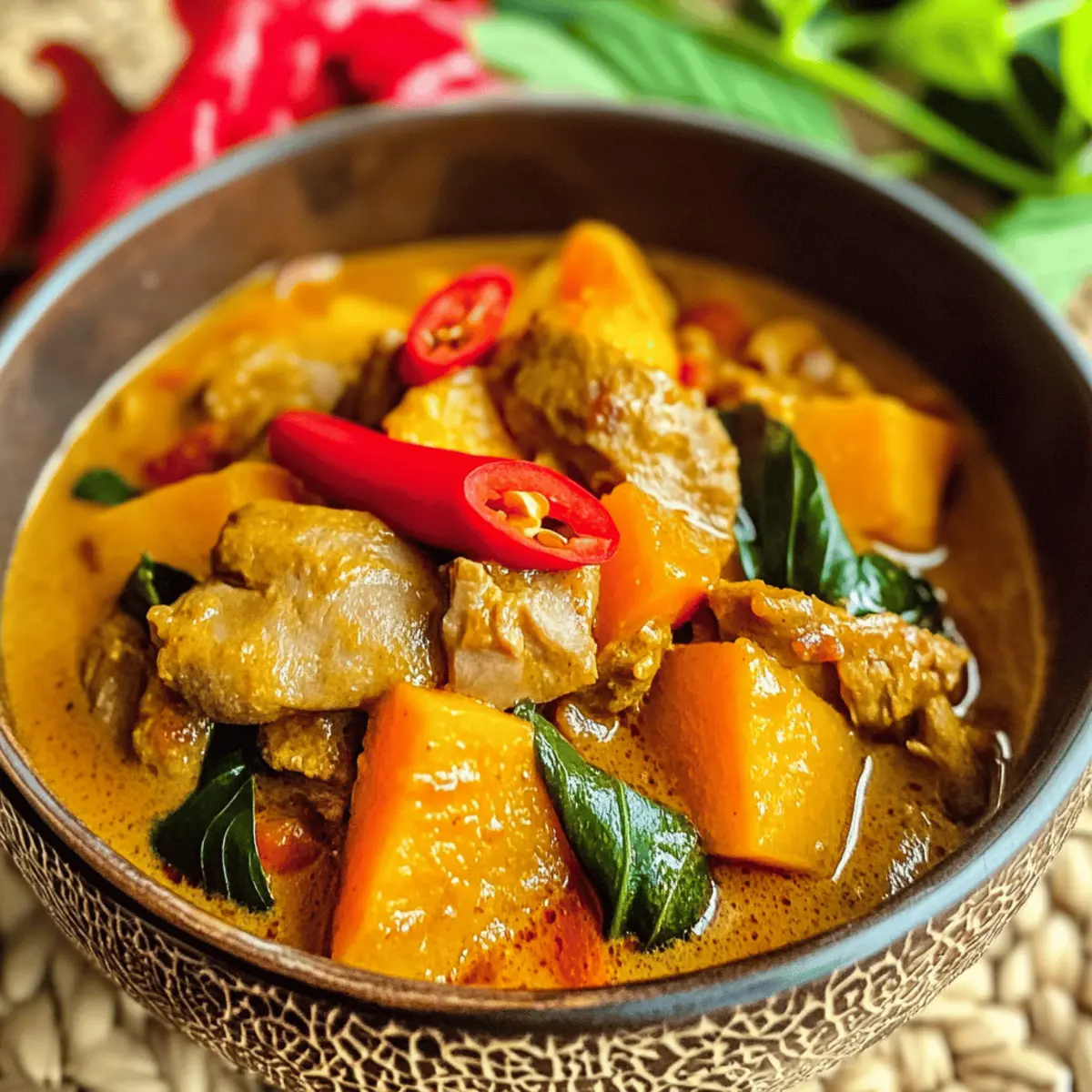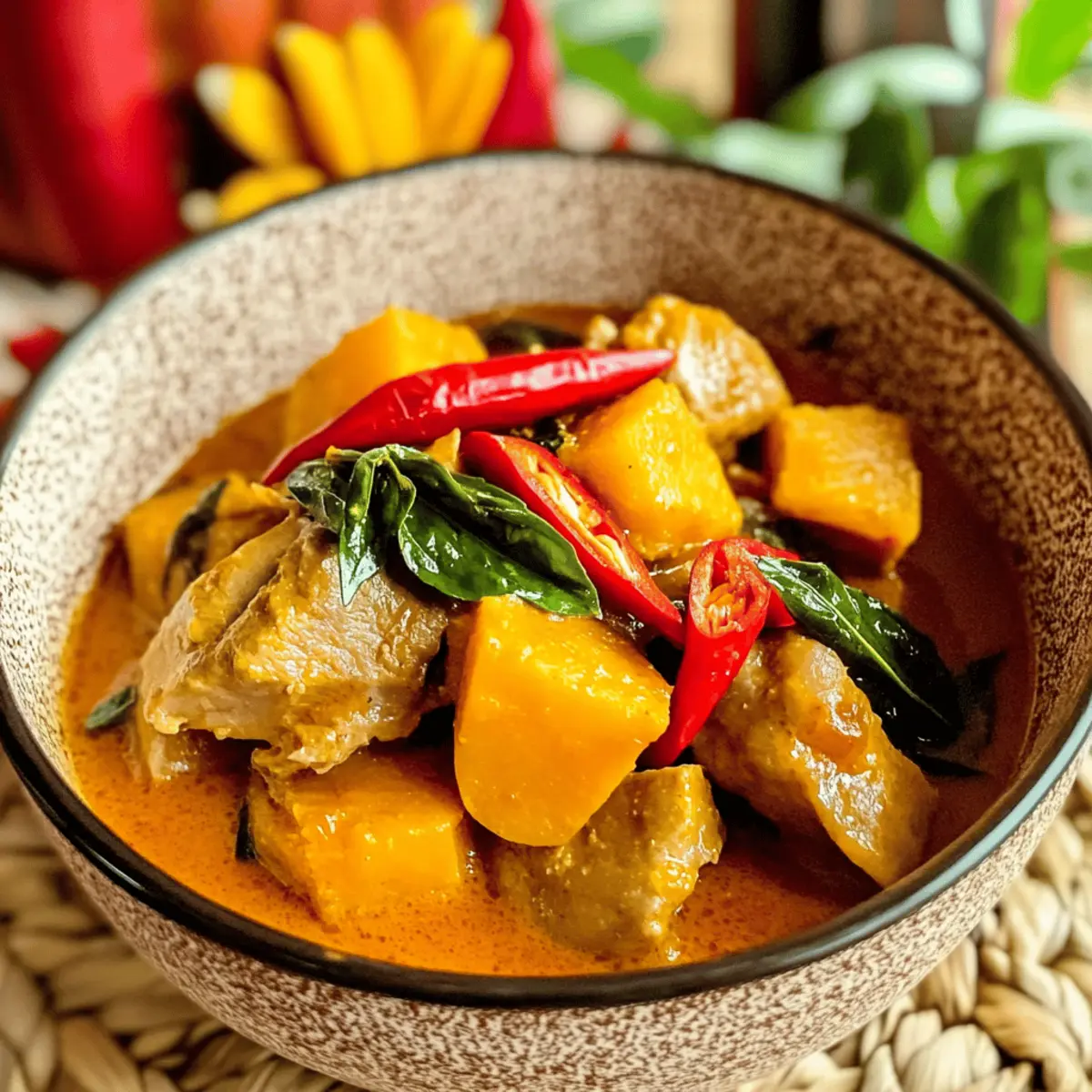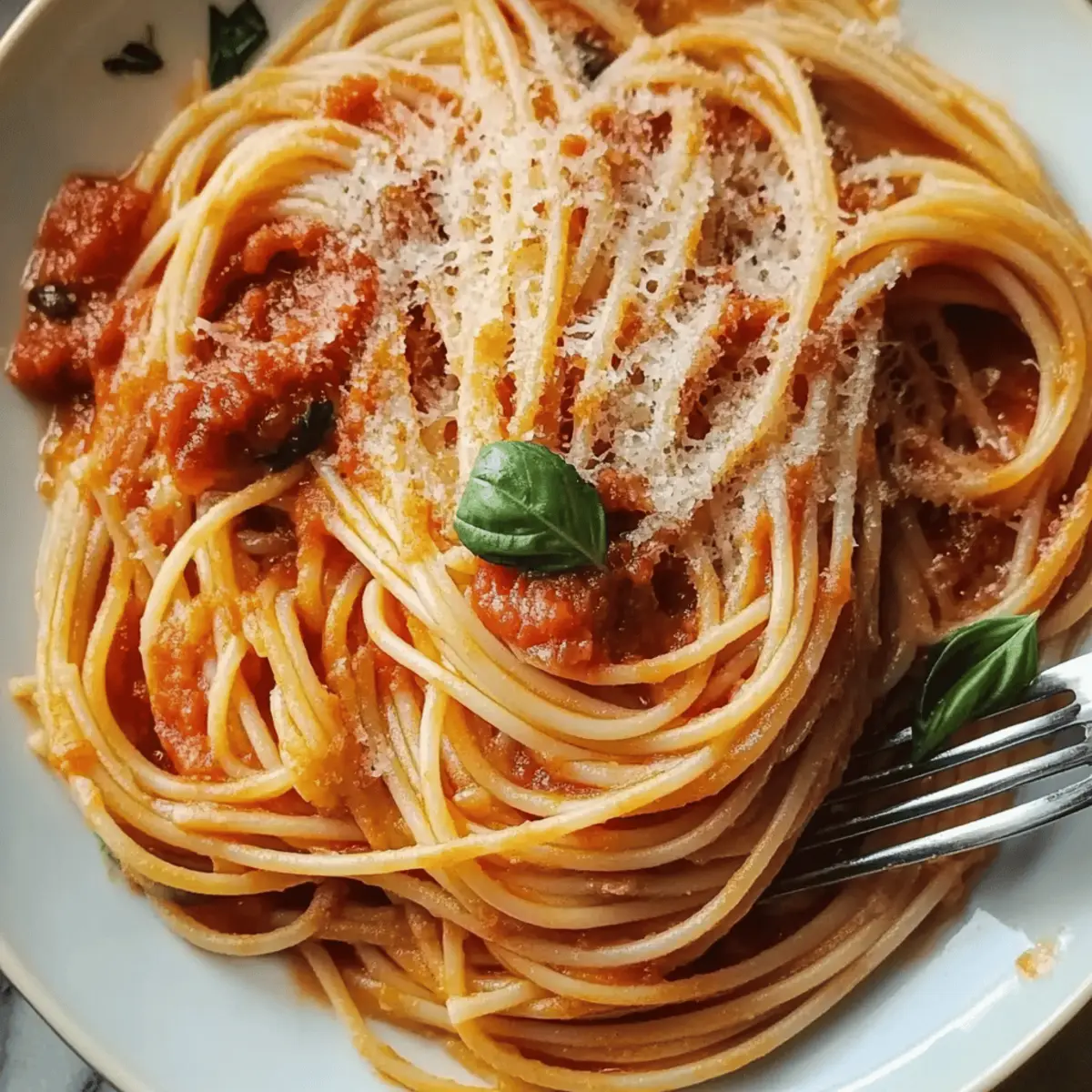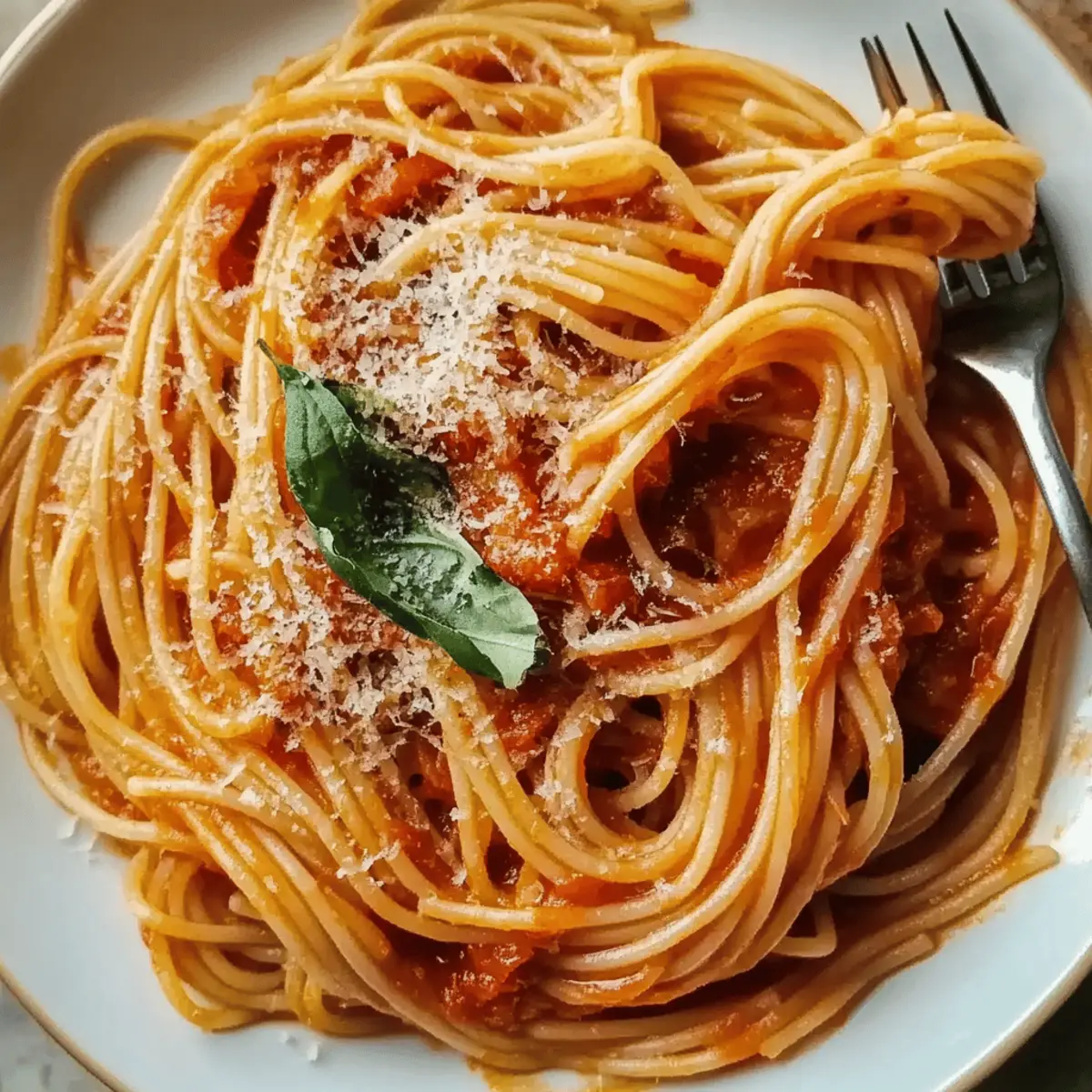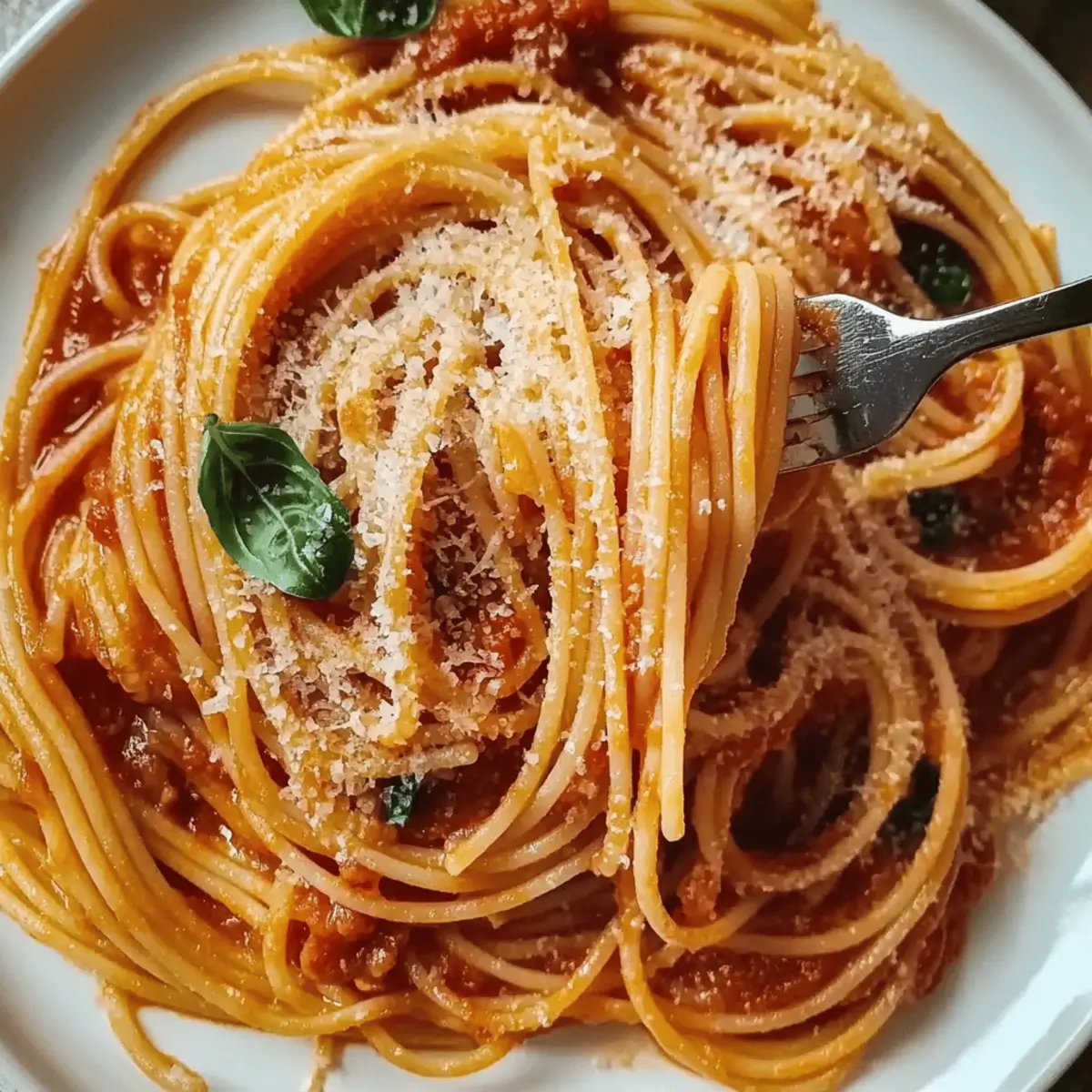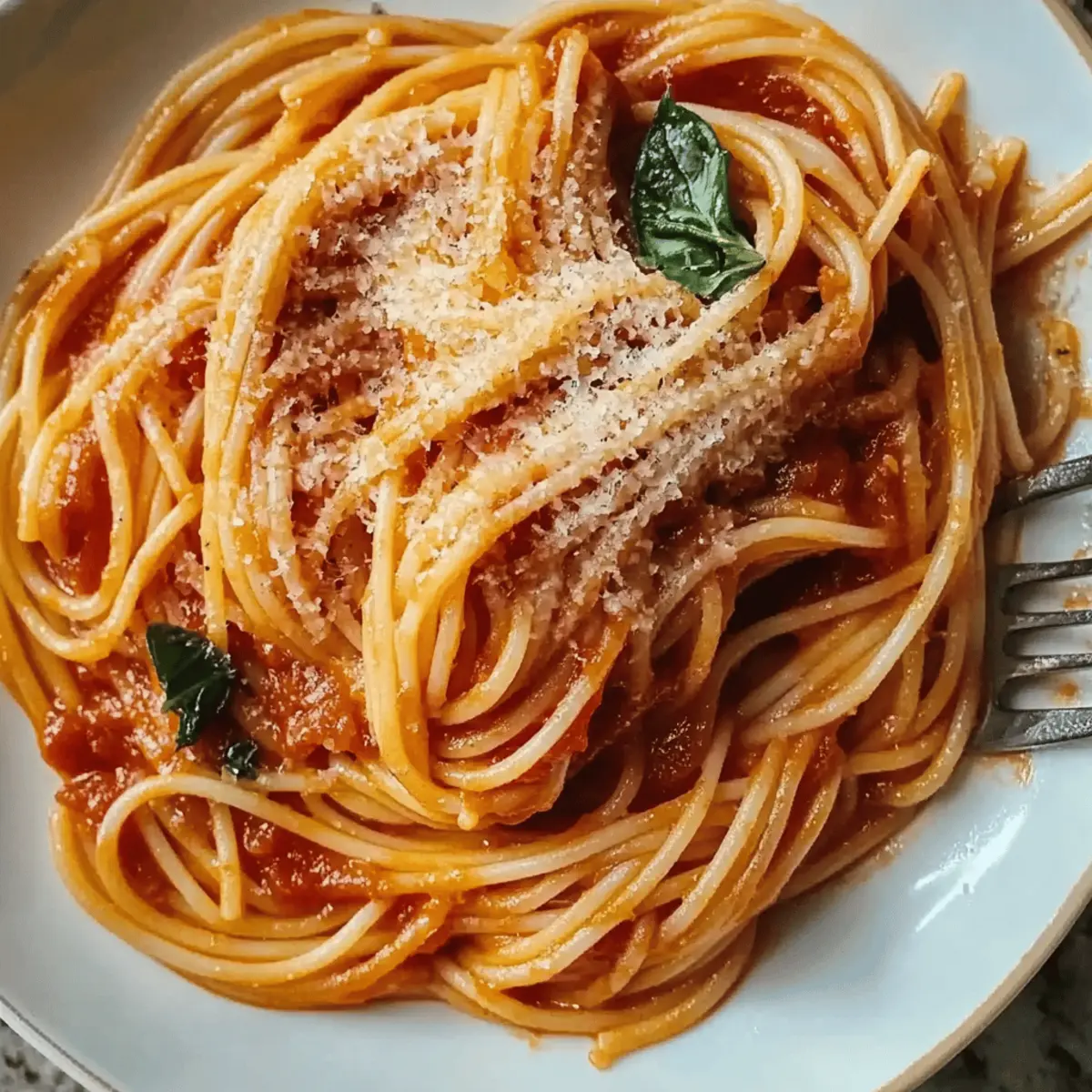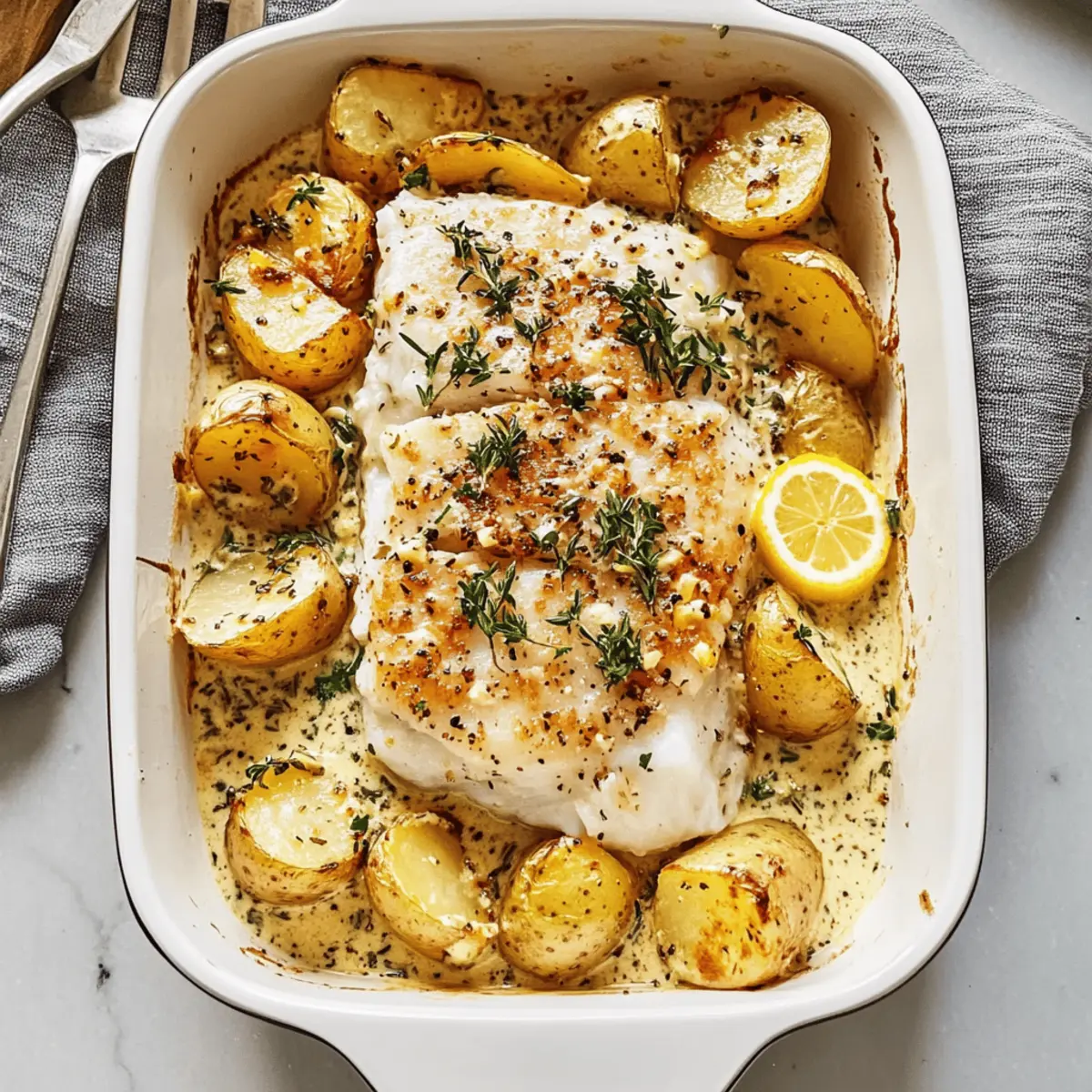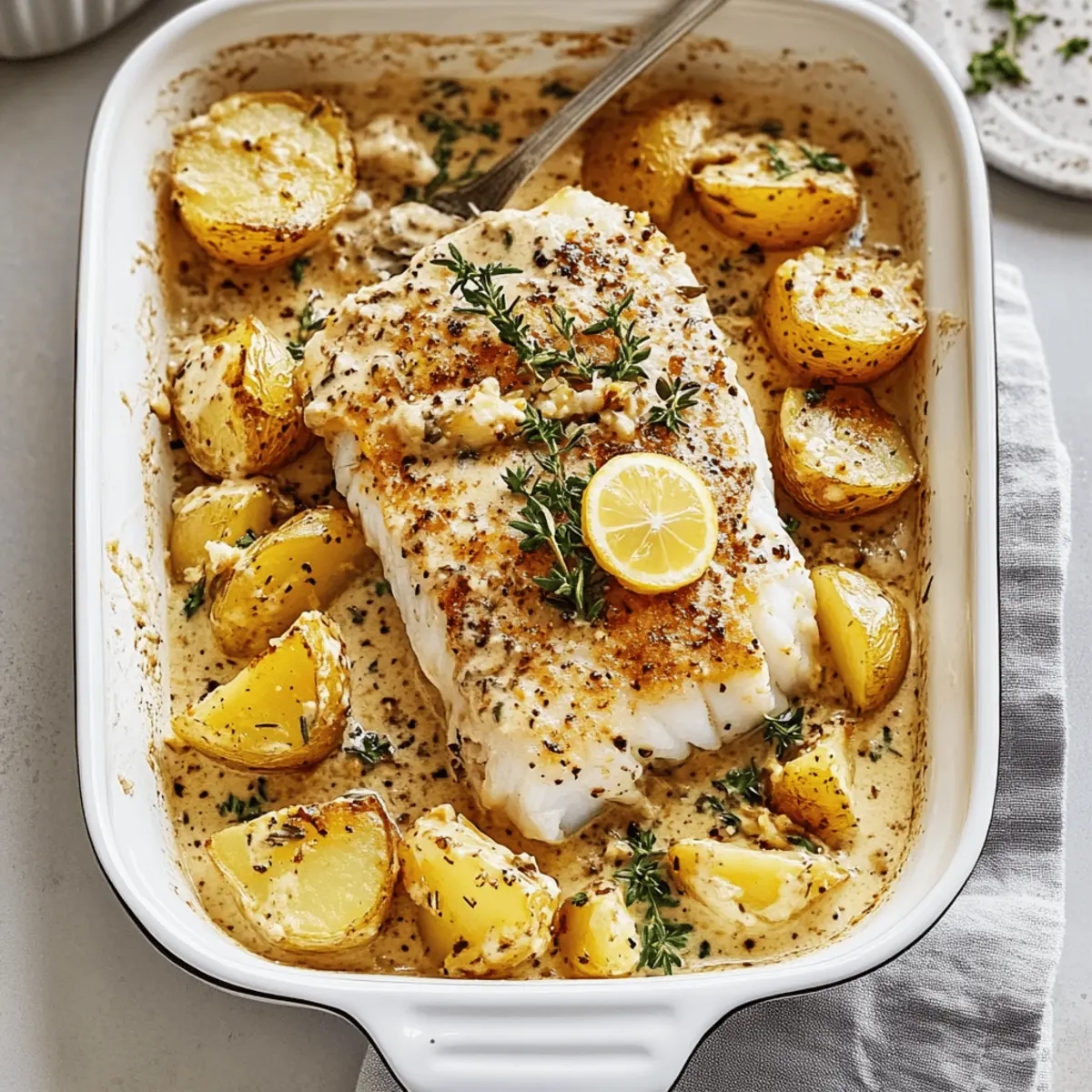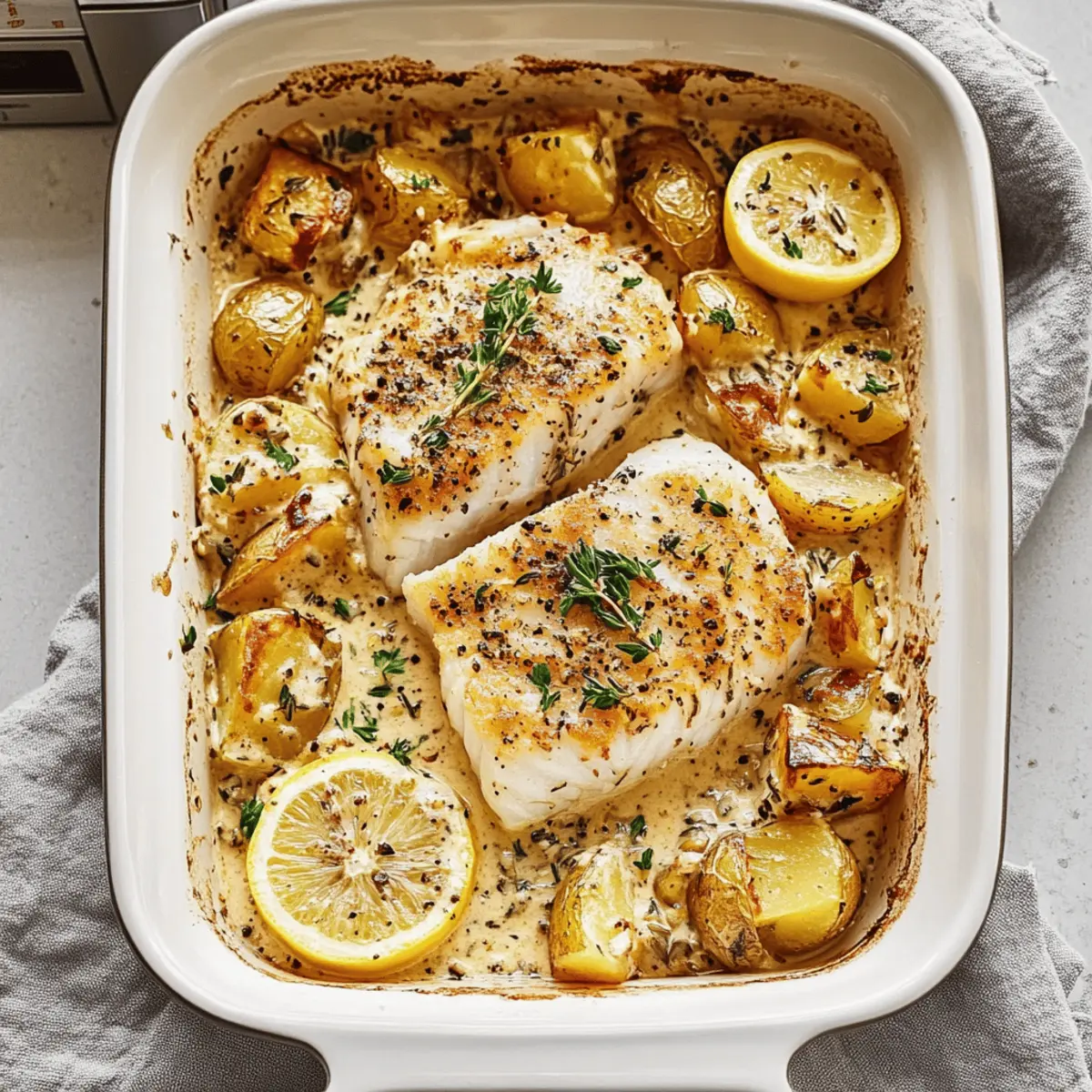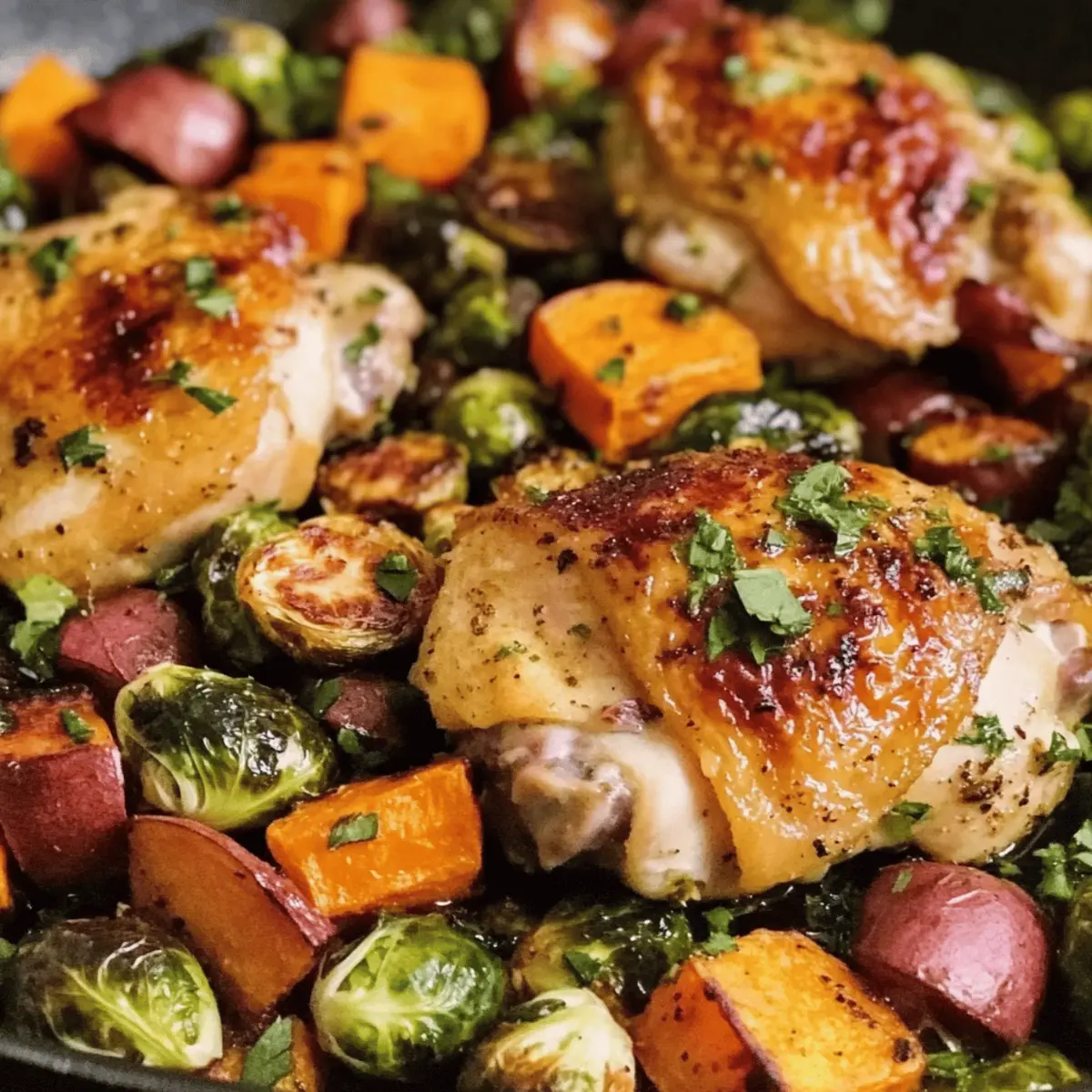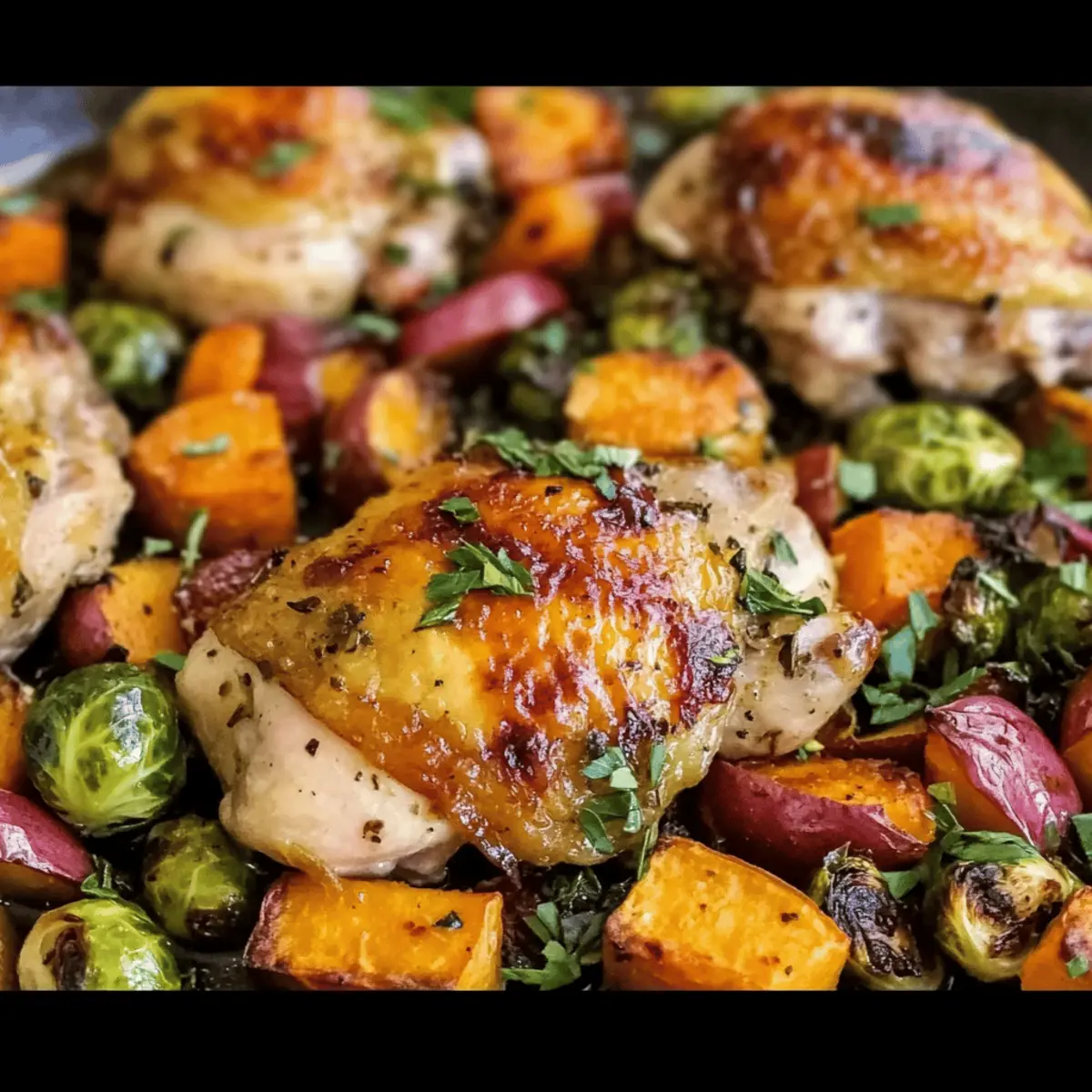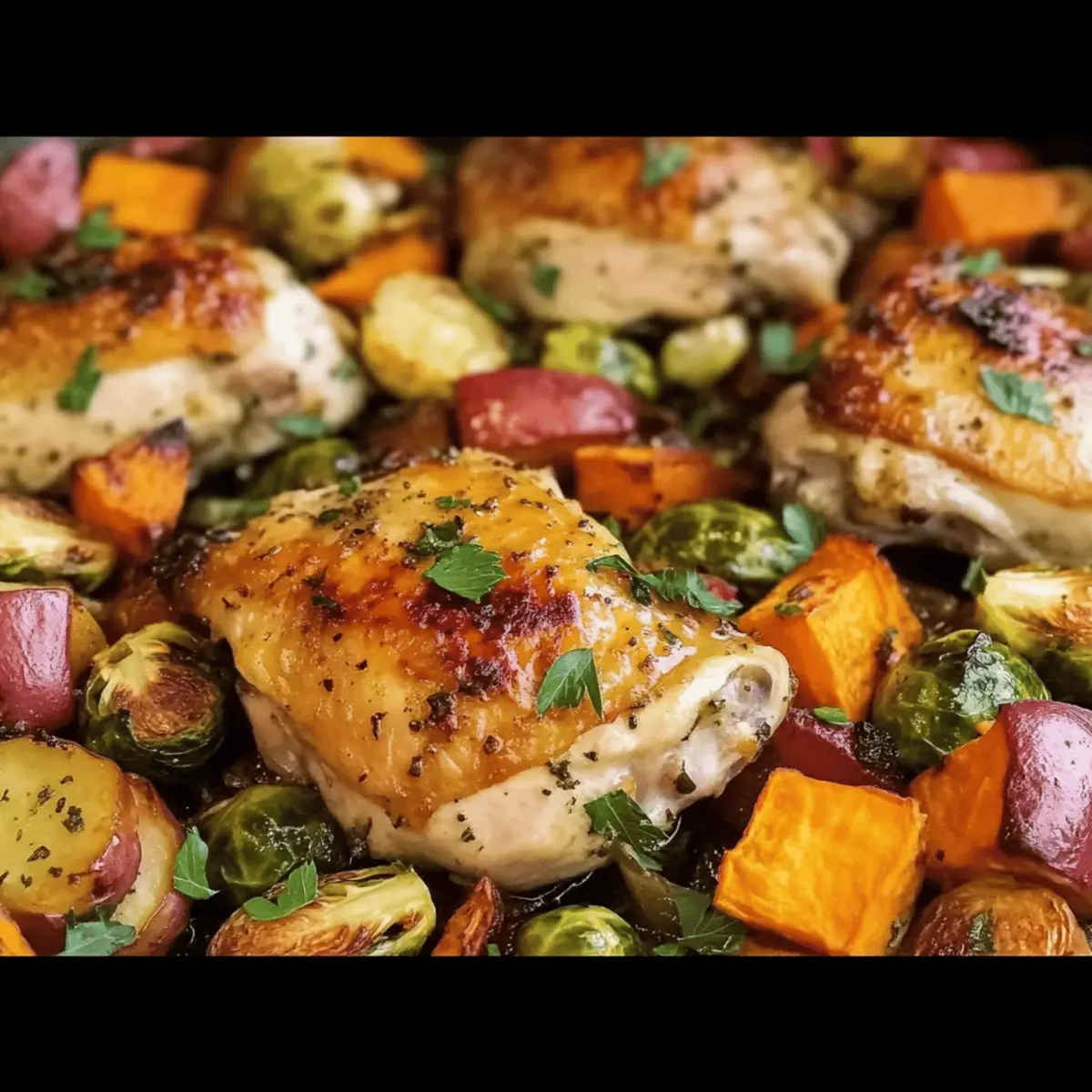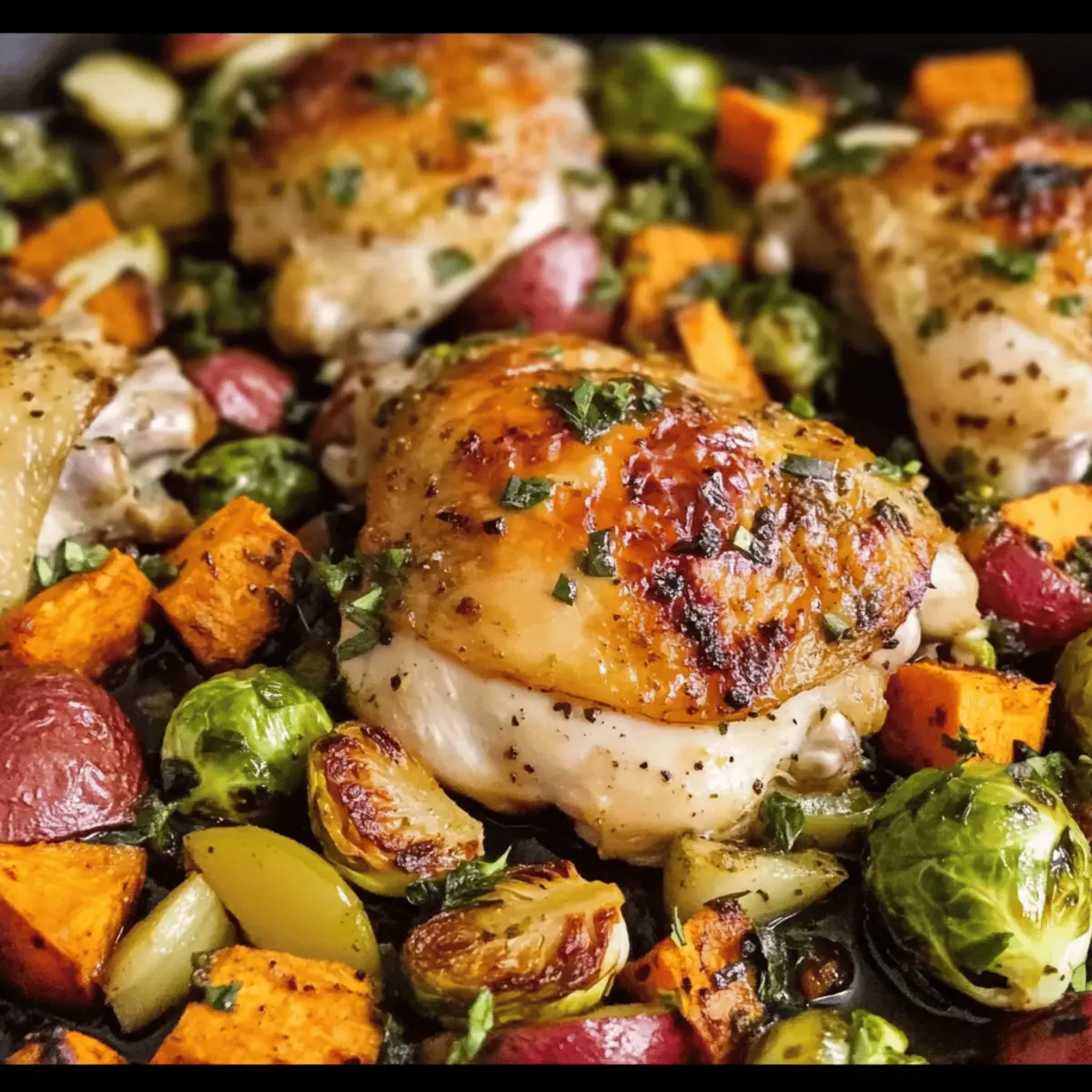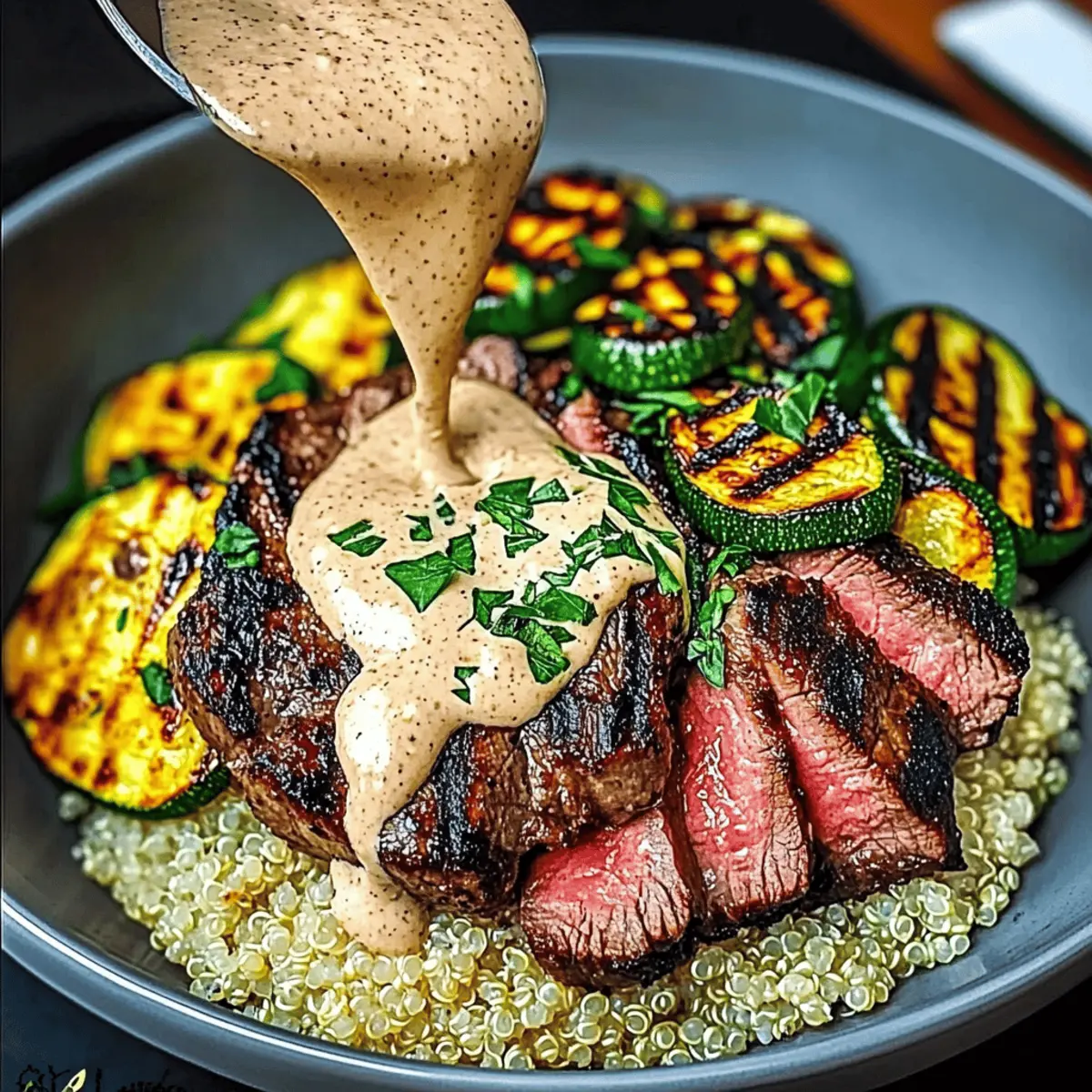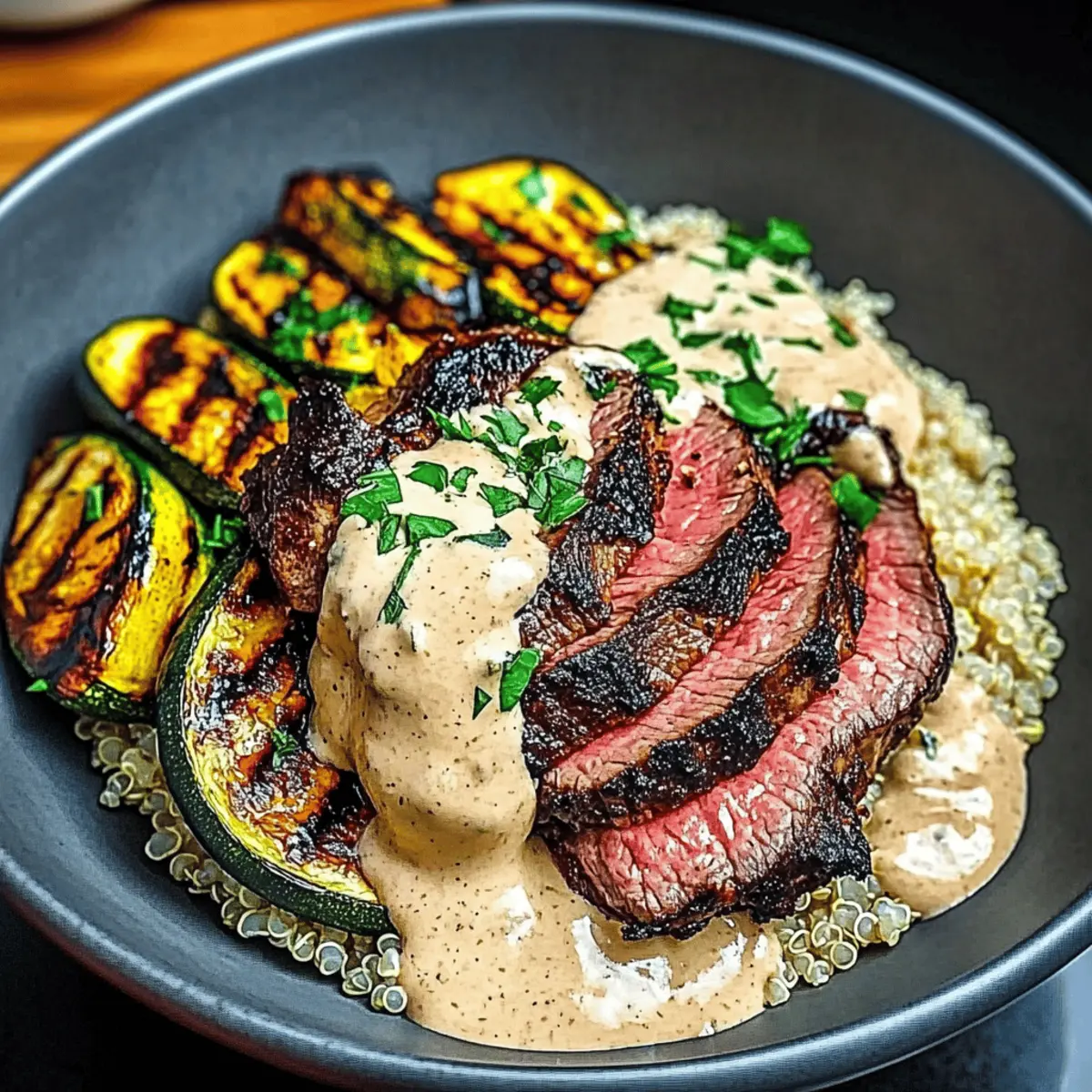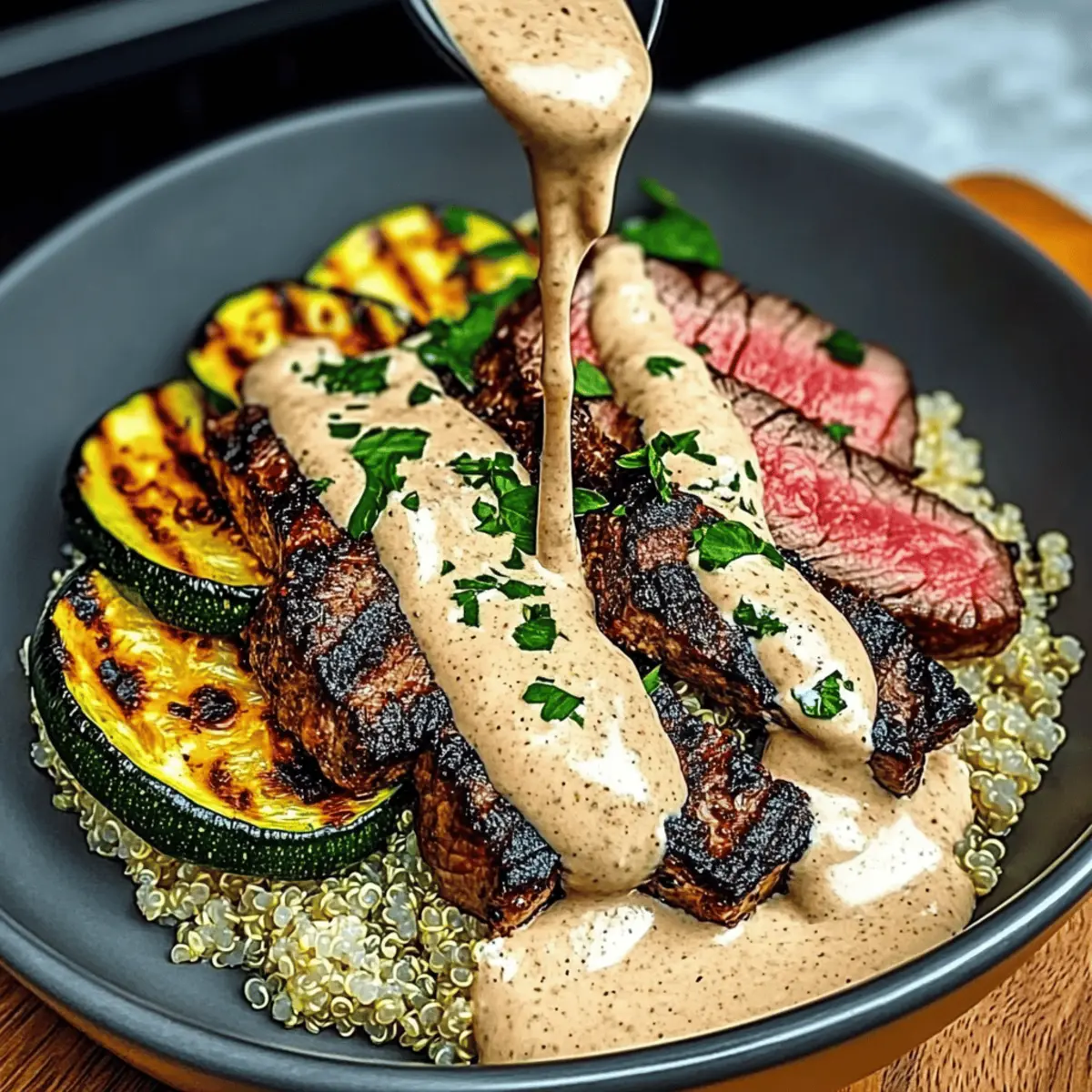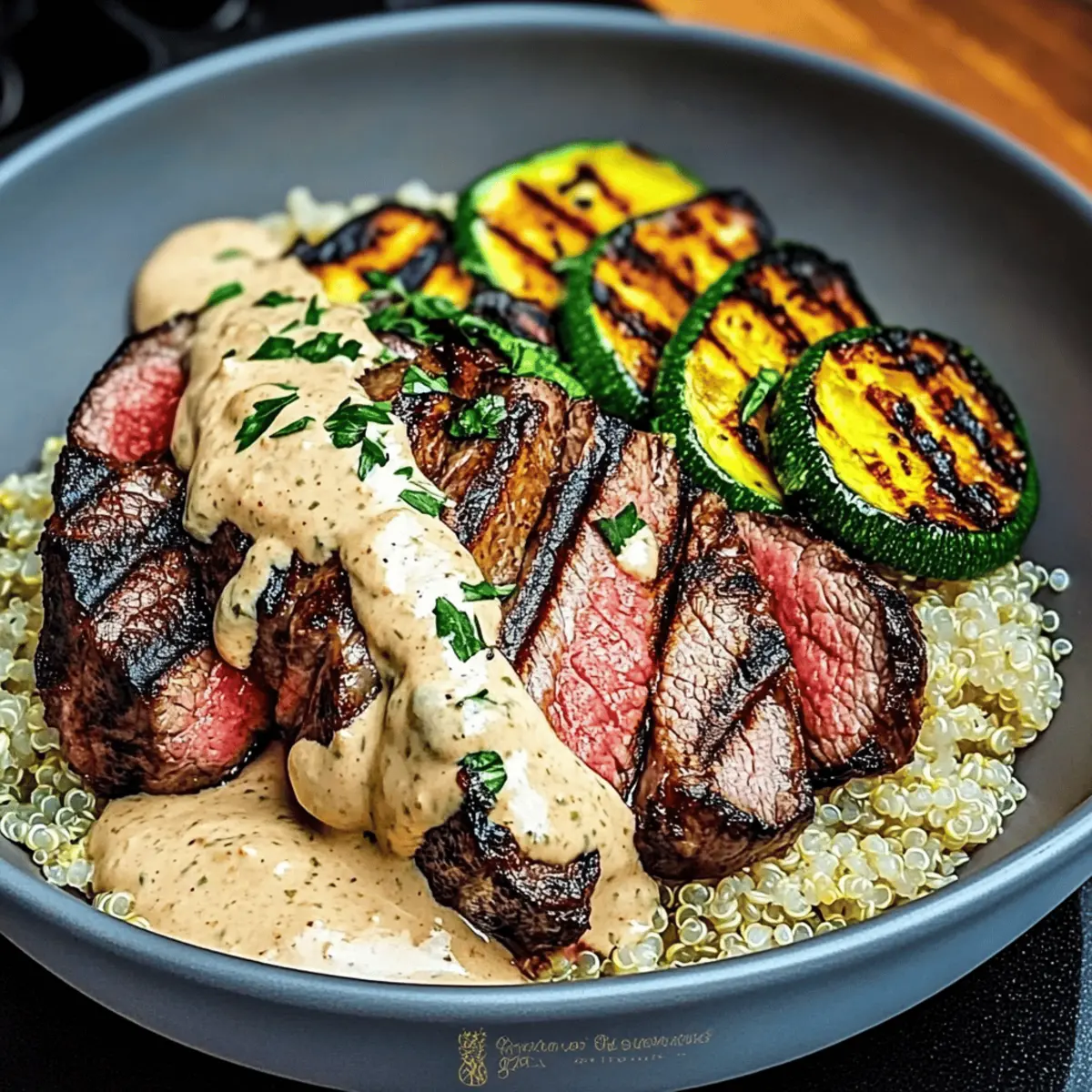As I peeled back the golden layers of a steaming Kerry Pie, the aroma of savory lamb and fresh herbs filled the kitchen, taking me straight to the heart of Ireland. This classic Irish dish, with its tender filling tucked away in a flaky, buttery crust, is the perfect antidote to the rush of fast food. Not only does this recipe offer a comforting bite for cozy family dinners, but it also gracefully adapts to your personal preferences—use beef, chicken, or even veggies! The best part? With straightforward prep and a satisfying outcome, it’s sure to impress at any gathering. Are you ready to discover the warmth of homemade comfort food?
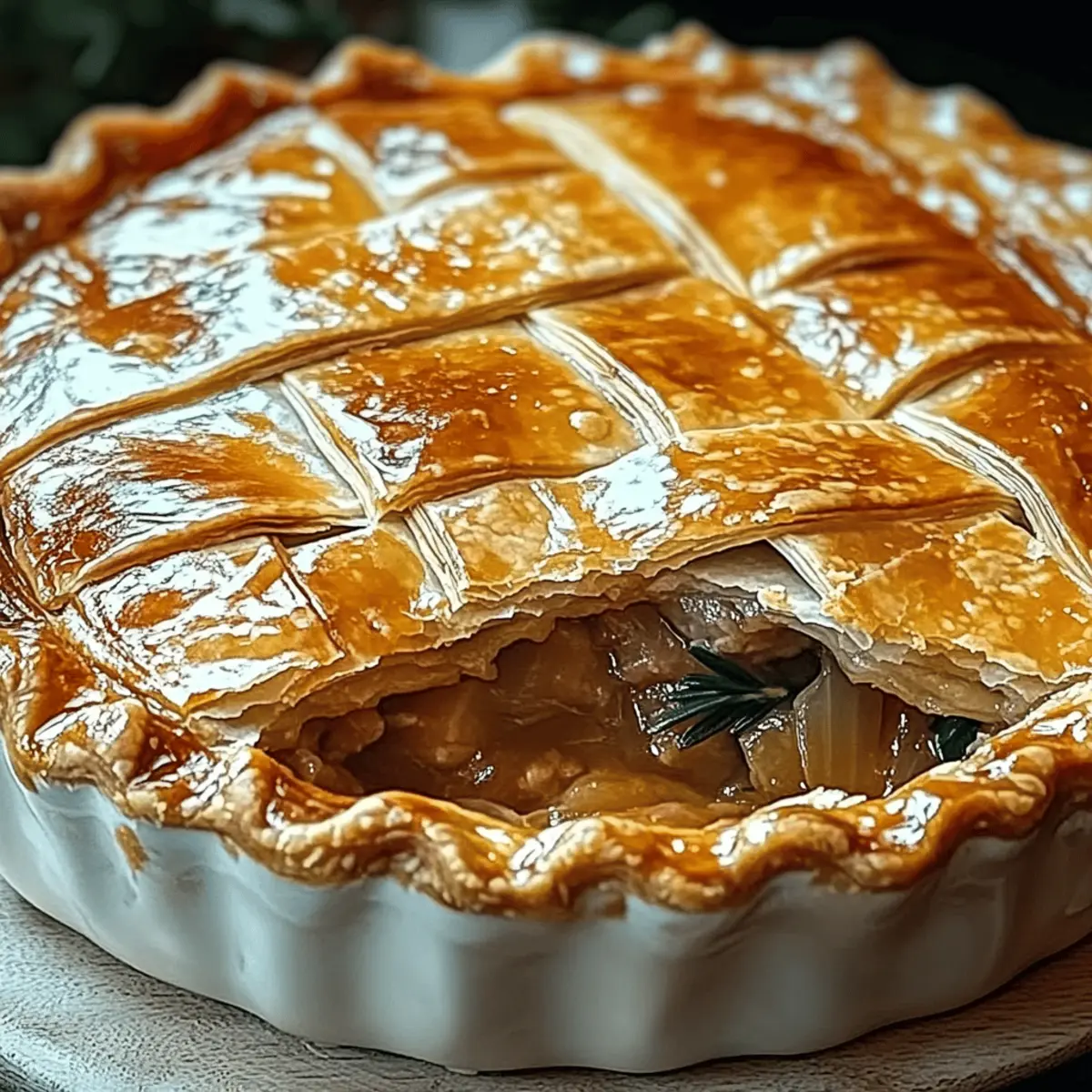
Why is Kerry Pie so irresistible?
Hearty Filling: Tender lamb slow-cooked to perfection, creating a flavorful centerpiece that warms the soul.
Golden Crust: A flaky, buttery pastry that cradles the filling, ensuring every bite is a delight.
Versatile Options: Easily adapt the recipe with chicken or a medley of vegetables to cater to diverse tastes.
Family Favorite: This dish is sure to bring everyone to the table, perfect for gatherings or cozy dinners.
Quick Prep: With straightforward steps, you’ll have a comforting meal ready without the fuss of fast food. For more comforting dishes, consider trying Tamale Pie Hearty or Spinach Pie Deliciously for a delightful twist on comfort food classics!
Kerry Pie Ingredients
• Curious about what makes this dish special?
For the Filling
- Lamb (or Mutton) – The star ingredient, slow-cooked for tenderness and deep flavor; substitute with beef or chicken for variety.
- Onions – Create sweetness in the filling; shallots can substitute for a milder taste.
- Carrots – Bring natural sweetness and a delightful crunch; parsnips can act as a sweeter alternative.
- Herbs (Thyme, Rosemary, Parsley) – Elevate the dish with fresh flavors; opt for fresh herbs for the best aroma and taste.
- Savory Broth or Stock – Provides moisture to the filling; use homemade broth for a richer taste.
For the Pastry
- Butter – Adds richness and flakiness to the crust; ensure it's cold for optimal texture.
- Flour – Forms the base of the pastry; all-purpose flour works beautifully here.
- Water – Binds the dough; use ice-cold water for a tender crust.
For the Egg Wash
- Egg – Gives the pie a beautiful golden finish when baked; milk can be a healthier substitute if preferred.
- Water – Mixed with egg for the wash; ensures a shiny crust that beckons from the oven.
With these essential ingredients, you're all set to dive into making your very own comforting Kerry Pie, embracing traditional Irish cuisine right in your kitchen!
Step‑by‑Step Instructions for Kerry Pie
Step 1: Prepare the Filling
Begin by cutting the lamb into uniform cubes for even cooking. In a large skillet over medium heat, brown the lamb pieces for about 5–7 minutes until lightly golden. Next, add chopped onions and diced carrots, stirring for another 5 minutes until the onions become translucent. Pour in savory broth and sprinkle in fresh thyme, rosemary, and parsley, letting it simmer on low for 1–1.5 hours until the lamb is tender and flavors meld beautifully.
Step 2: Make the Pastry
In a mixing bowl, combine flour and cold butter, using your fingertips to incorporate until the mixture resembles coarse crumbs. Gradually add ice-cold water, mixing just until the dough holds together. Avoid overworking the dough to maintain flakiness. Shape it into a ball, wrap in plastic wrap, and refrigerate for 30 minutes to allow it to firm up and relax.
Step 3: Assemble the Pie
Preheat your oven to 400°F (200°C). Roll out half of the pastry dough on a floured surface to fit your pie dish. Gently lay the rolled pastry into the dish, pressing it against the edges. Spoon in the savory lamb filling evenly, then roll out the second half of the pastry and cover the filling. Pinch the edges to seal and cut a few slits on top to allow steam to escape during baking.
Step 4: Bake
Before placing the Kerry Pie in the oven, prepare an egg wash by whisking together an egg and a splash of water. Brush the mixture over the top crust for a beautiful golden finish. Bake in the preheated oven for 45-50 minutes, or until the crust is golden brown and flaky. The tantalizing aroma will fill your kitchen as the pie bakes, creating an inviting atmosphere.
Step 5: Serve
Once baked, remove the Kerry Pie from the oven and let it rest for about 10 minutes. This step allows the filling to settle and makes slicing easier without losing its shape. Serve warm, perhaps alongside buttery mashed potatoes or a fresh green salad, to enjoy a comforting meal that reflects the warmth of traditional Irish cooking.
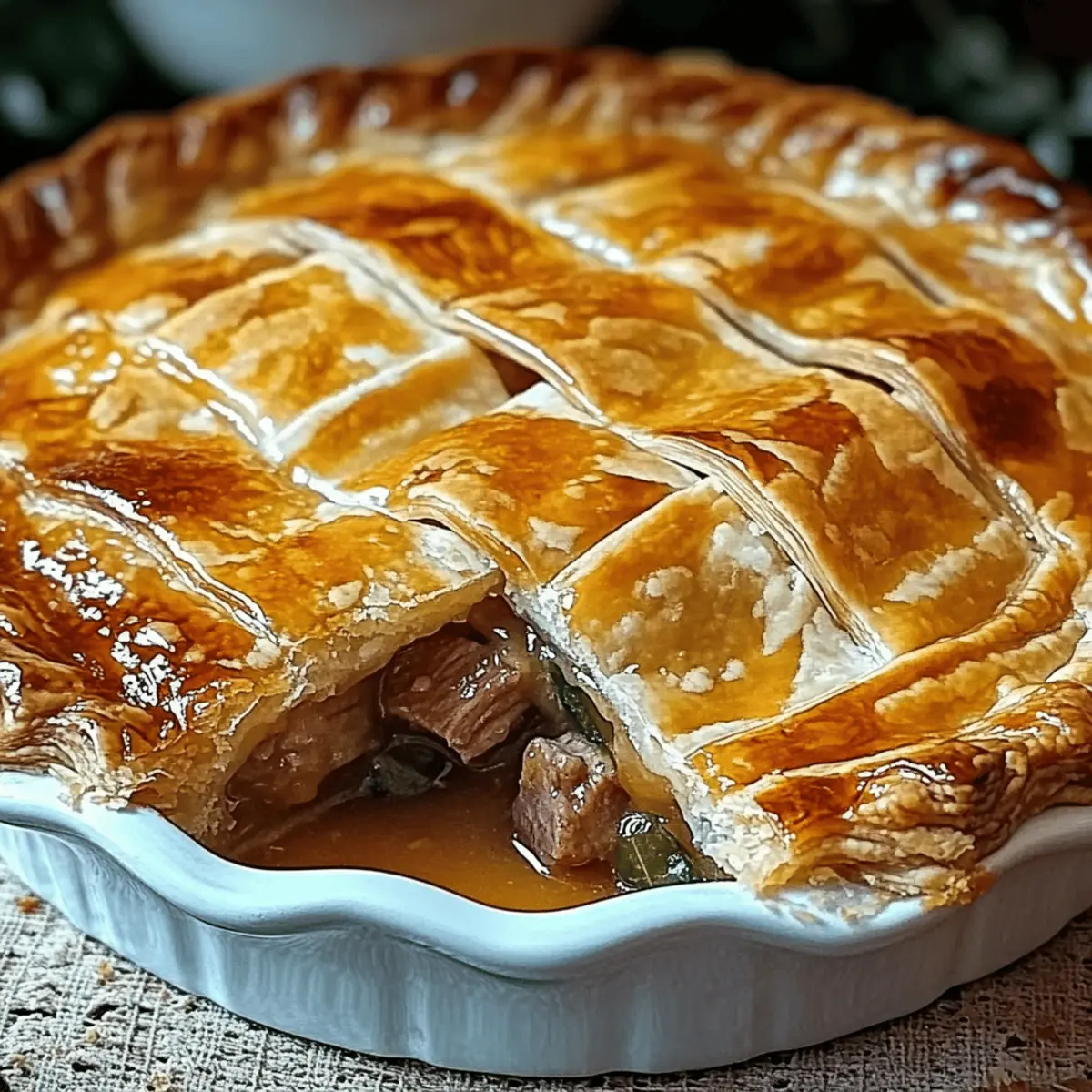
Variations & Substitutions for Kerry Pie
Feel free to explore your creativity in the kitchen with these delightful twists on the classic Kerry Pie!
-
Chicken: Swap lamb for chicken for a lighter, equally flavorful option that maintains the dish's heartiness.
-
Vegetarian Fill: Replace meat with a combination of hearty vegetables like mushrooms, peas, and carrots to create a satisfying vegetarian version.
-
Herb Infusion: Try different herbs like dill or sage to customize your pie's flavor, offering an exciting twist on the traditional taste.
-
Spicy Kick: Add a pinch of red pepper flakes or diced jalapeños to the filling for a bit of heat that elevates the overall flavor.
-
Sweet Surprise: Incorporate sweet potatoes into the filling for a touch of natural sweetness that beautifully complements the savory lamb.
-
Cheesy Goodness: Add your favorite cheese, like cheddar or feta, to the filling for a rich and indulgent flavor that will wow your taste buds.
-
Flaky Alternative: Use phyllo pastry instead of traditional pastry dough for an ultra-flaky and textured experience that adds an extra layer of crunch.
-
Dough Variations: Swap in whole wheat or gluten-free flour for the pastry for a healthier or allergy-friendly option without sacrificing flavor.
Your Kerry Pie journey is just beginning—be bold and make it your own! And if you’re in the mood to explore more comforting recipes, don’t miss out on the delightful flavors of Tamale Pie Hearty and the earthy goodness of Spinach Pie Deliciously. Happy cooking!
Helpful Tricks for Kerry Pie
- Uniform Cuts: Ensure lamb is cut into uniform pieces for even cooking, which results in a tender filling.
- Gentle Handling: Don’t overwork the pastry dough; handle it gently to maintain a light, flaky texture in your Kerry Pie.
- Resting Time: Let the pie rest after baking for about 10 minutes; this prevents the filling from spilling out when sliced.
- Temperature Check: Use an instant-read thermometer; the internal temperature should reach 145°F (63°C) for safely cooked lamb.
- Creative Fillings: Feel free to experiment with the filling; vegetables or beef can make delicious adaptations while preserving the essence of Kerry Pie.
What to Serve with Classic Irish Kerry Pie?
Pairing the savory, heartfelt flavors of Kerry Pie with the right sides can elevate your meal into a cozy feast that comforts the soul.
- Buttery Mashed Potatoes: Creamy and smooth, they soak up the delicious juices from the pie, enhancing each bite.
- Crisp Green Salad: A refreshing mix of greens with a tangy vinaigrette provides a bright contrast to the rich filling.
- Roasted Root Vegetables: Their natural sweetness pairs perfectly with the hearty lamb, bringing a balance of flavors and textures to the table.
- Colcannon: This traditional Irish dish of mashed potatoes blended with cabbage or kale offers a delightful creaminess that complements the pie's flaky crust.
- Homemade Gravy: Drizzling rich gravy over your pie adds an extra layer of savory goodness, making each bite even more satisfying.
- Steamed Broccoli: A simple, vibrant green addition that adds nutrients and a slight crunch, brightening the overall meal.
- Guinness or Stout: A smooth pint of this classic Irish beer enhances the flavors of the lamb and adds a touch of authenticity to your dining experience.
- Apple Crumble: Finish the meal on a sweet note with warm, spiced apples beneath a buttery crumble—deliciously comforting!
Make Ahead Options
Kerry Pie is an excellent choice for meal prep aficionados! You can make the filling up to 3 days in advance, simply allowing it to cool and then refrigerating in an airtight container. The pastry dough can also be prepared ahead of time; just wrap it in plastic and refrigerate for up to 24 hours. When you’re ready to assemble, roll out the chilled dough and fill it with your prepped filling. Bake according to the original recipe instructions for a fresh, delicious pie that tastes just as satisfying as if it were made that day. This make-ahead strategy saves time on busy weeknights while delivering a comforting homemade meal!
How to Store and Freeze Kerry Pie
Fridge: Store leftover Kerry Pie in an airtight container for up to 3 days to maintain freshness and flavor.
Freezer: For longer storage, wrap the pie tightly in plastic wrap and aluminum foil, then freeze for up to 3 months.
Reheating: To enjoy, thaw the pie overnight in the fridge and reheat in the oven at 350°F (175°C) for about 25 minutes, ensuring the crust stays crispy.
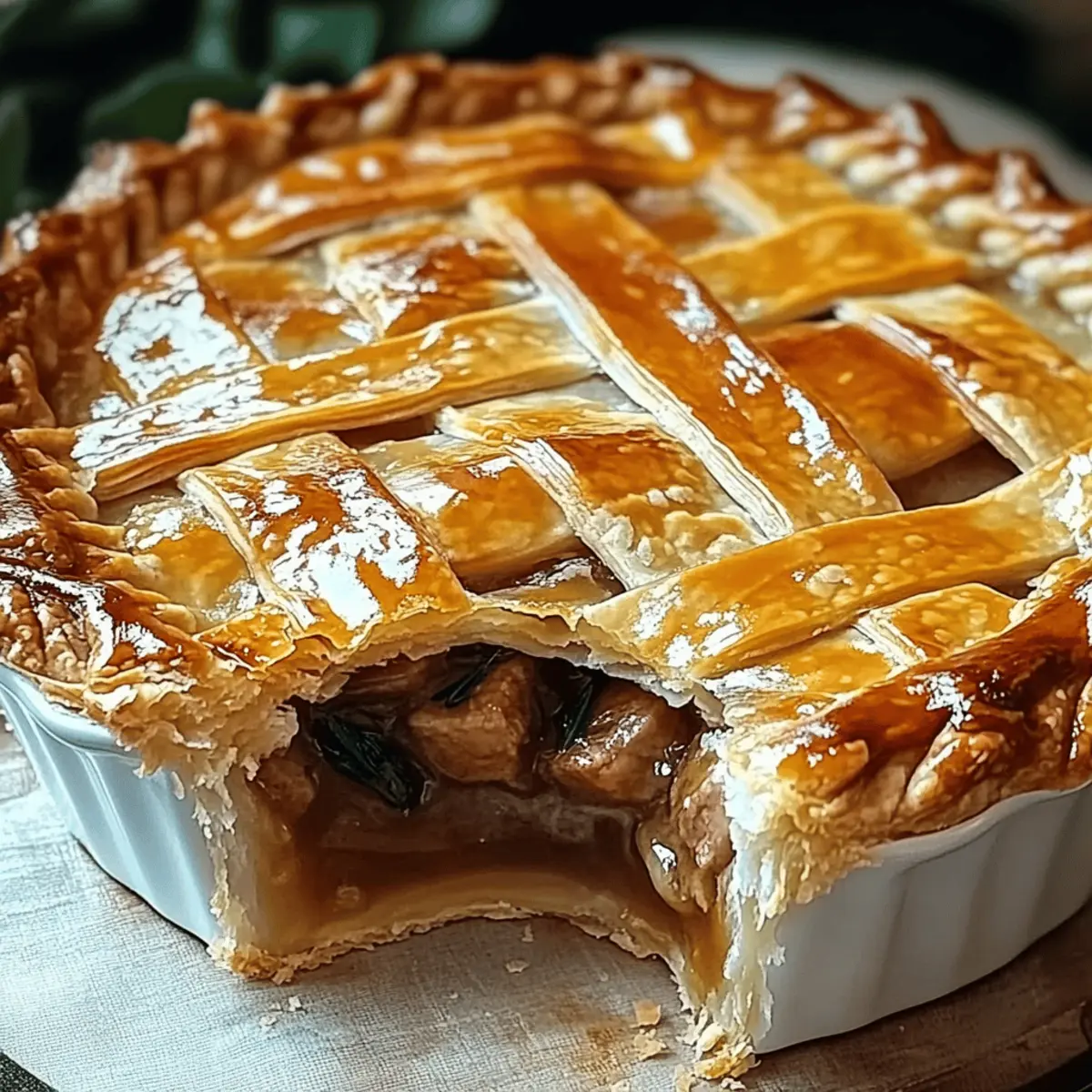
Kerry Pie Recipe FAQs
What type of lamb is best for Kerry Pie?
For the best flavor and tenderness, I recommend using lamb shoulder or leg, as these cuts are ideal for slow cooking. If you prefer a milder taste, feel free to substitute with beef or chicken!
How should I store leftover Kerry Pie?
Store leftover Kerry Pie in an airtight container in the refrigerator for up to 3 days. To retain its delicious flakiness, I suggest reheating it in the oven rather than the microwave—just preheat to 350°F (175°C) and warm for about 25 minutes.
Can I freeze Kerry Pie?
Absolutely! To freeze, let the pie cool completely, then tightly wrap it in plastic wrap followed by aluminum foil. You can freeze it for up to 3 months. When you’re ready to enjoy, thaw overnight in the fridge and reheat in the oven until heated through.
What are some common issues when making Kerry Pie?
If your pastry dough is tough, it likely means it was overworked—try handling it gently next time! To ensure even cooking, cut the lamb into uniform pieces. If the filling is too watery, you can thicken it with a sprinkle of flour or cornstarch during the cooking process.
Are there any dietary considerations for Kerry Pie?
If you have dietary restrictions, consider substituting the lamb for a hearty chicken or a plant-based filling. For gluten-free needs, you can use gluten-free flour for the pastry, though it may alter the texture slightly. Always check for allergens in pre-made stock and pastry if using store-bought ingredients.
How can I enhance the flavor of my Kerry Pie?
To elevate your pie, try experimenting with different herb combinations or add a splash of red wine to the filling while it simmers. This not only deepens the flavor profile but also brings out a succulent, savory richness that’s hard to resist.

Savory Kerry Pie: A Cozy Taste of Irish Tradition
Ingredients
Equipment
Method
- Cut the lamb into uniform cubes. In a large skillet over medium heat, brown the lamb pieces for 5–7 minutes. Add onions and carrots; stir for another 5 minutes.
- Pour in the savory broth and sprinkle in the herbs. Let it simmer on low for 1–1.5 hours until the lamb is tender.
- Combine flour and cold butter in a bowl. Mix until it resembles coarse crumbs. Gradually add ice-cold water until dough holds together.
- Shape the dough into a ball, wrap in plastic, and refrigerate for 30 minutes.
- Preheat the oven to 400°F (200°C). Roll out half the pastry and fit it into the pie dish. Spoon the filling in evenly.
- Cover with the second half of the pastry, pinch edges to seal, and cut slits for steam.
- Prepare an egg wash by whisking egg and water. Brush over the top crust. Bake for 45-50 minutes until golden brown.
- Let the pie rest for 10 minutes before serving. Enjoy warm with mashed potatoes or salad.

